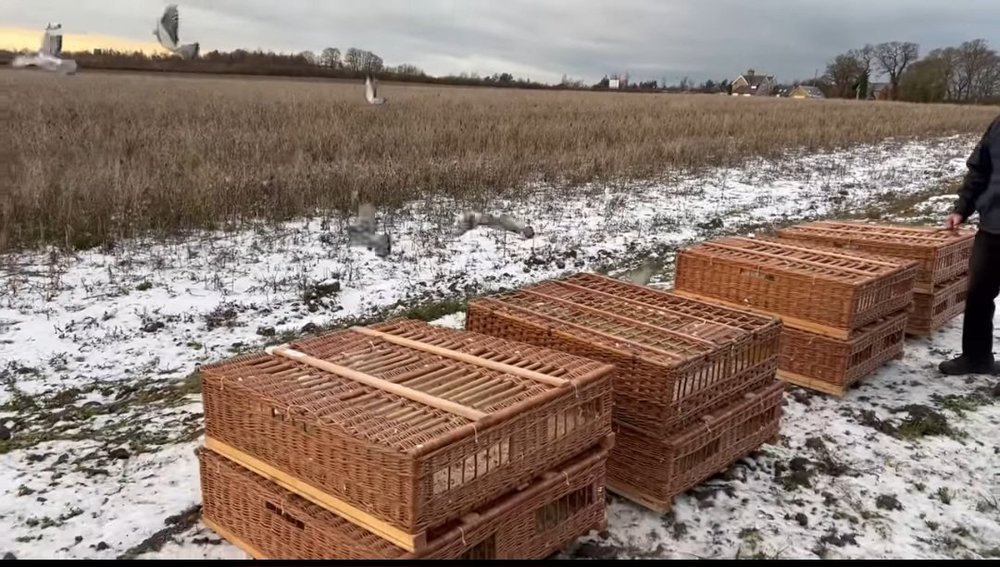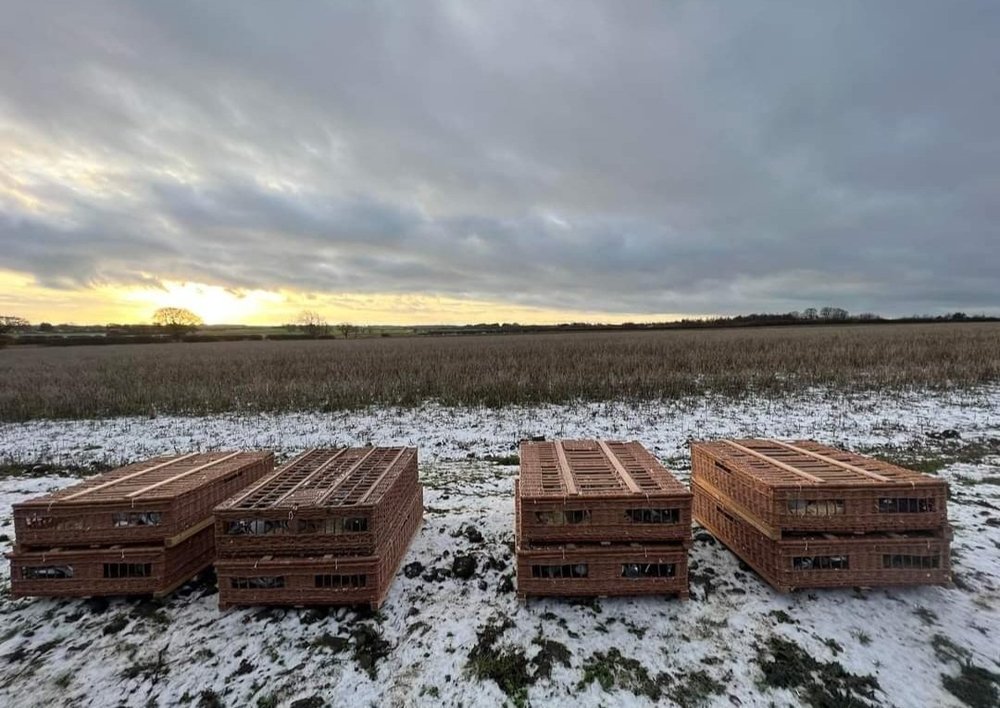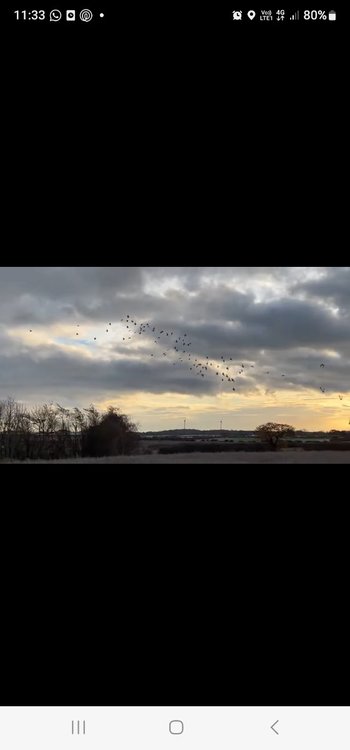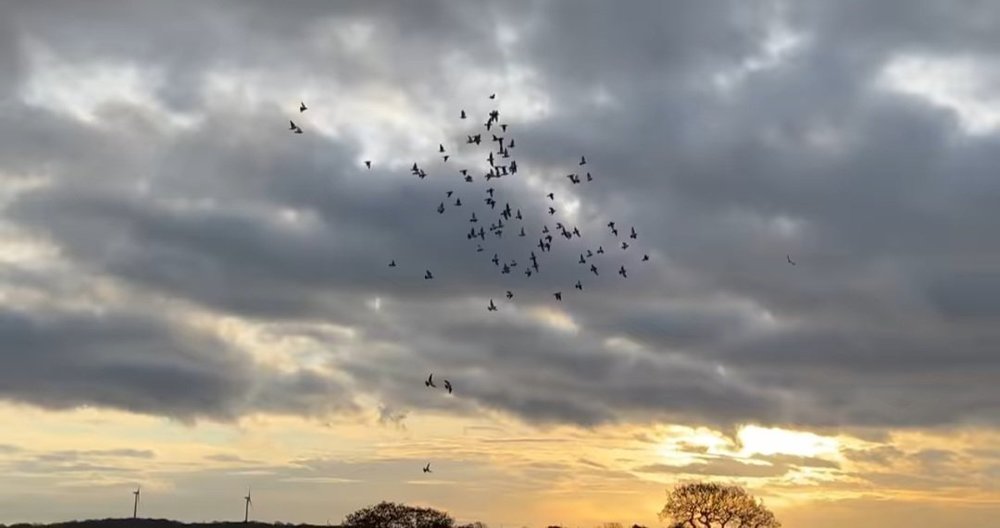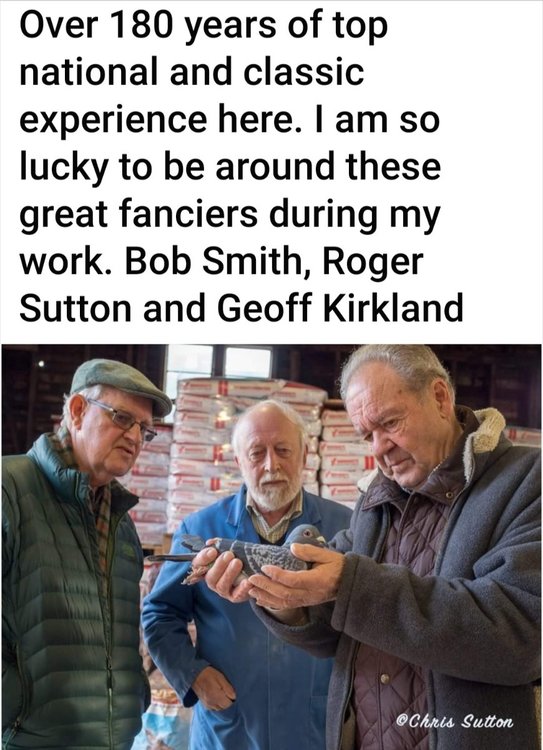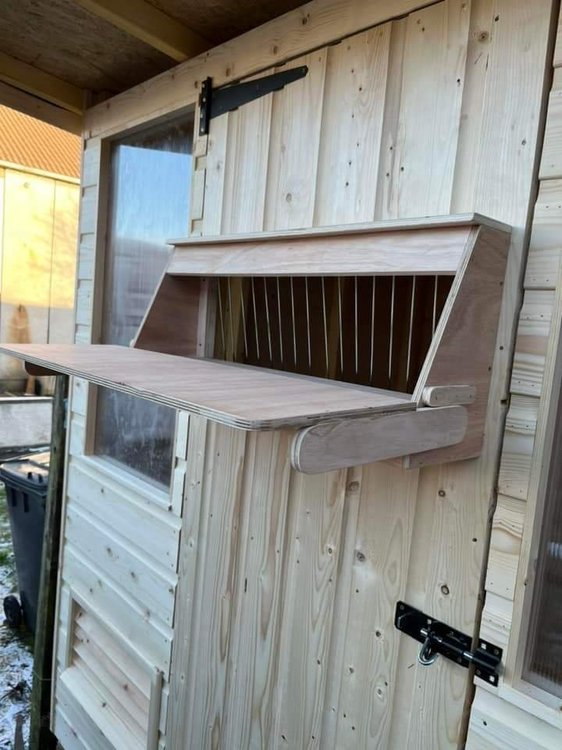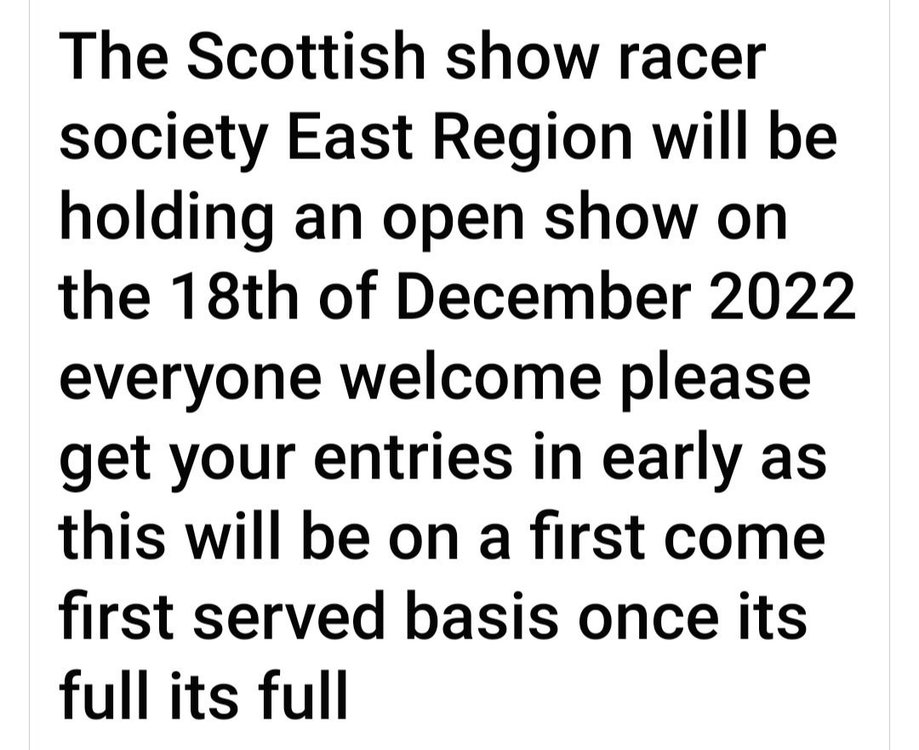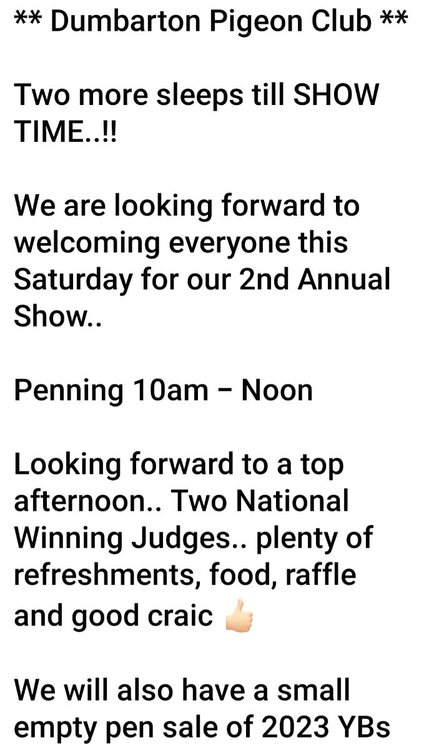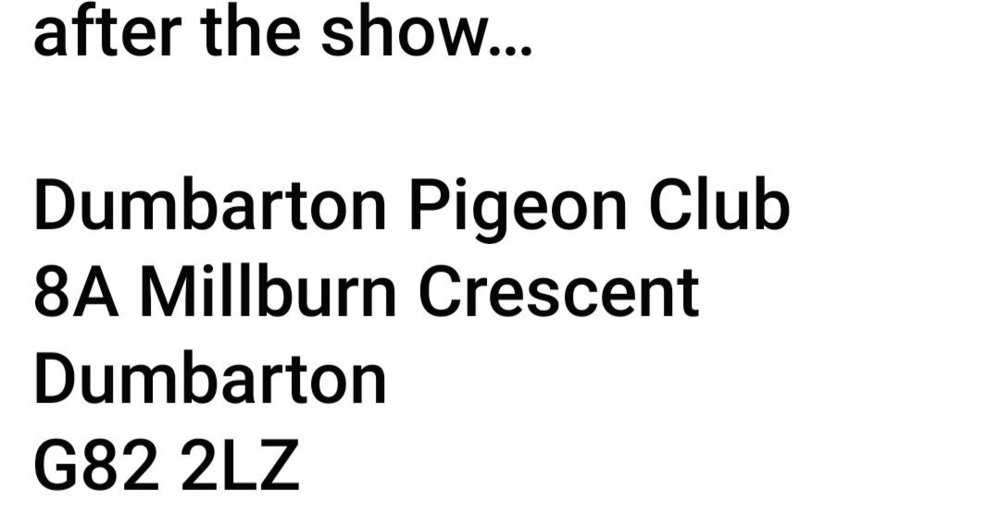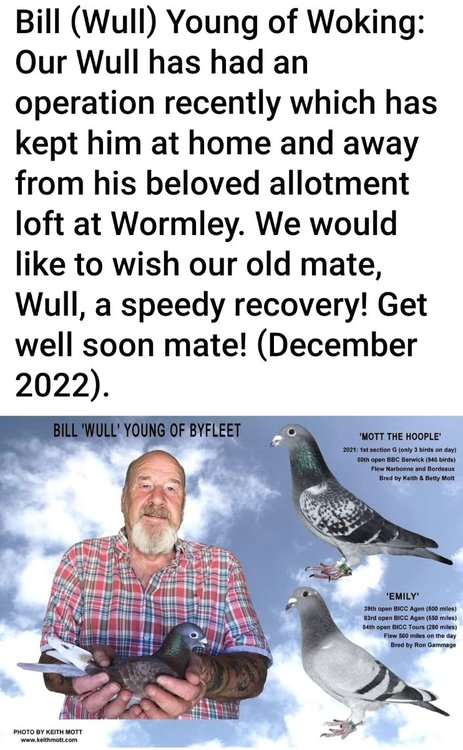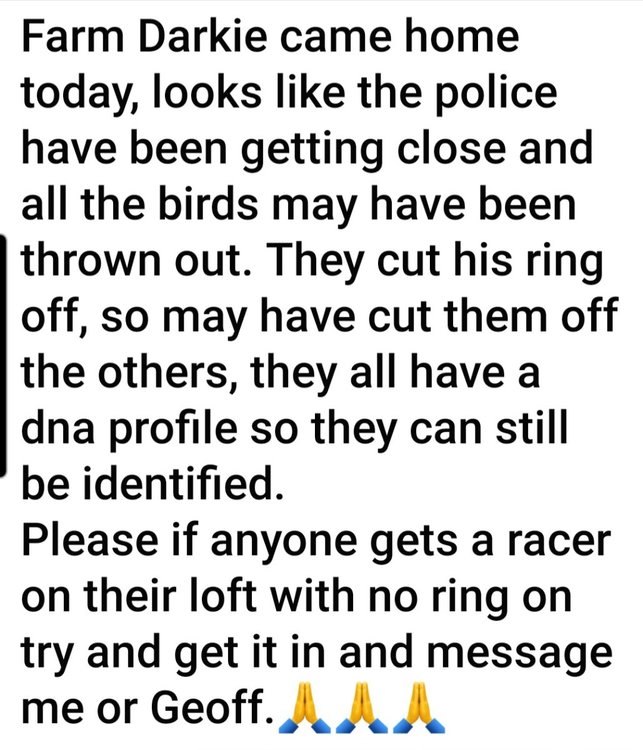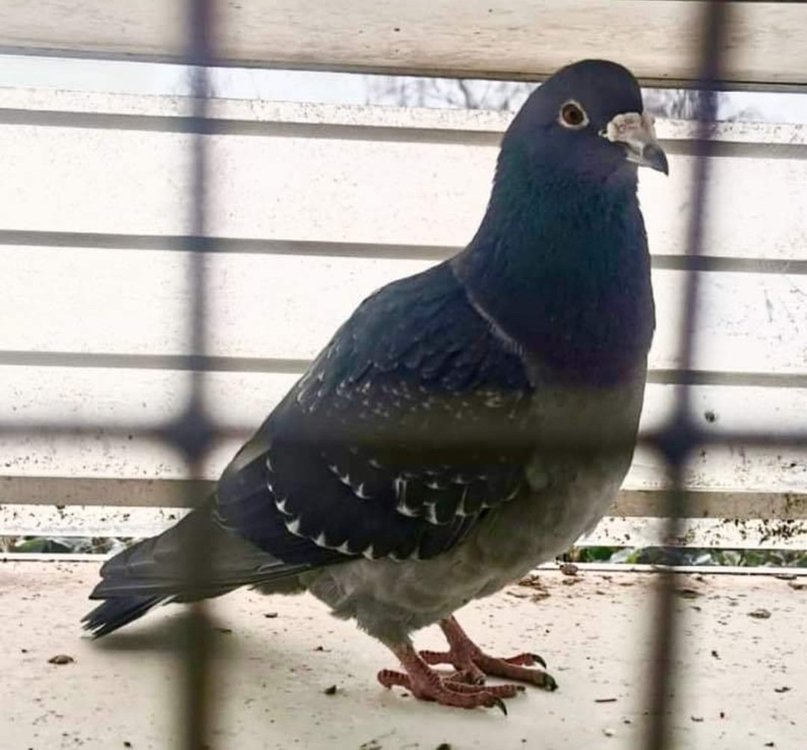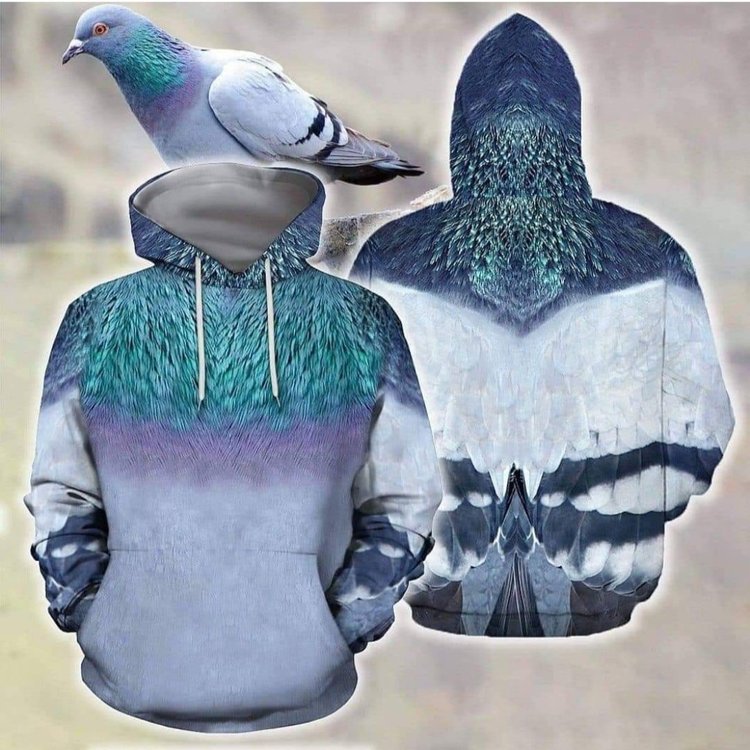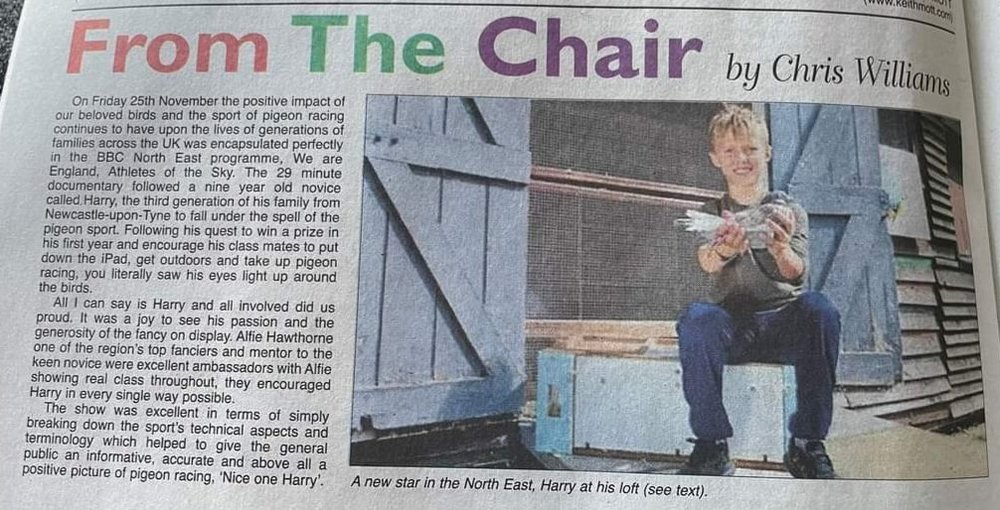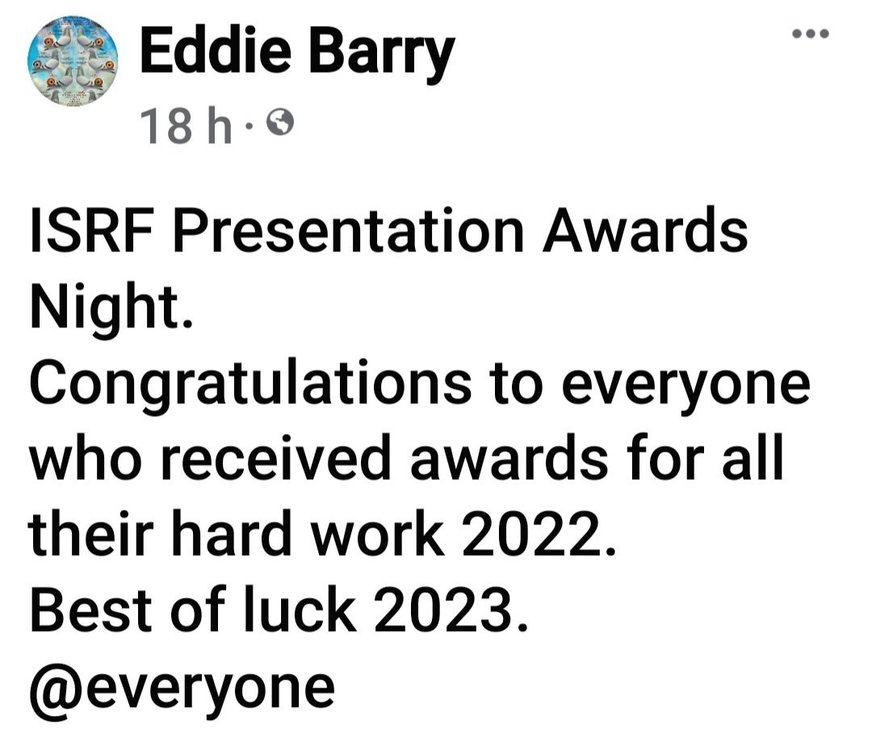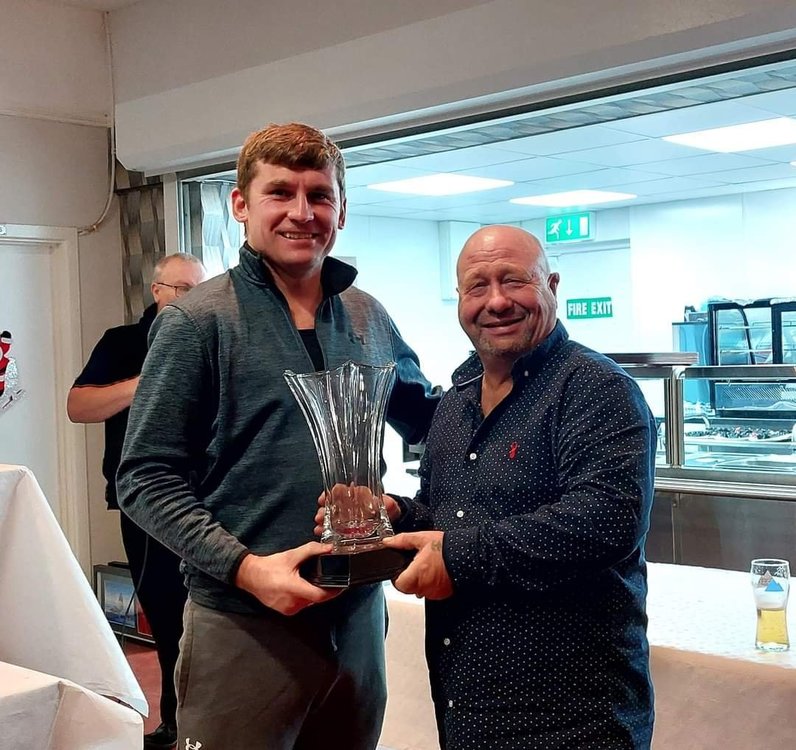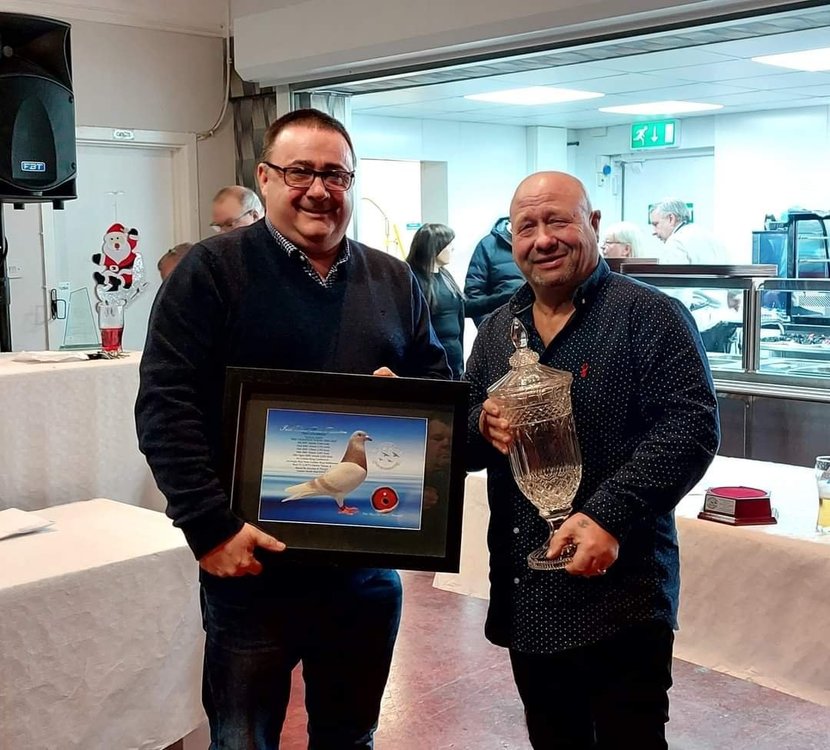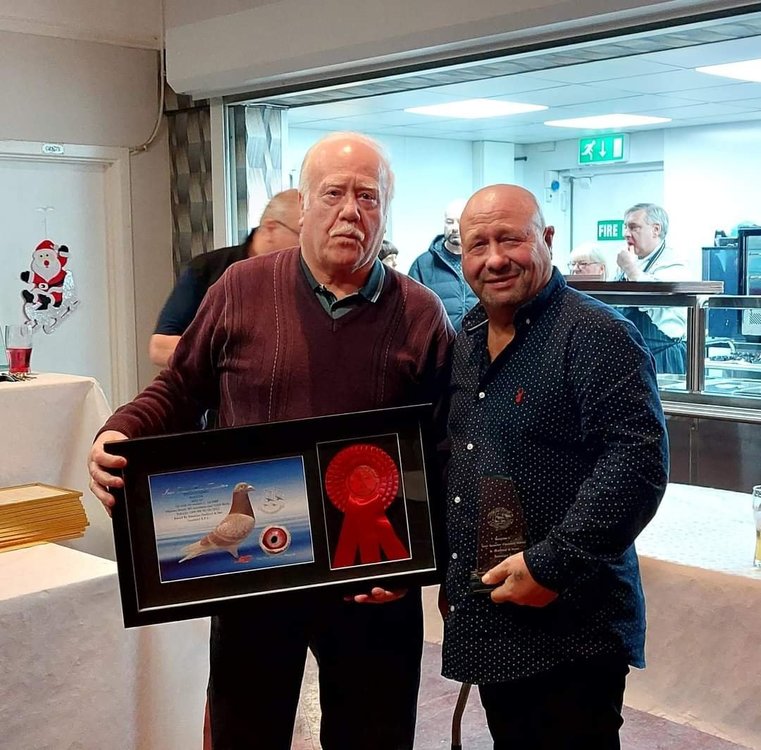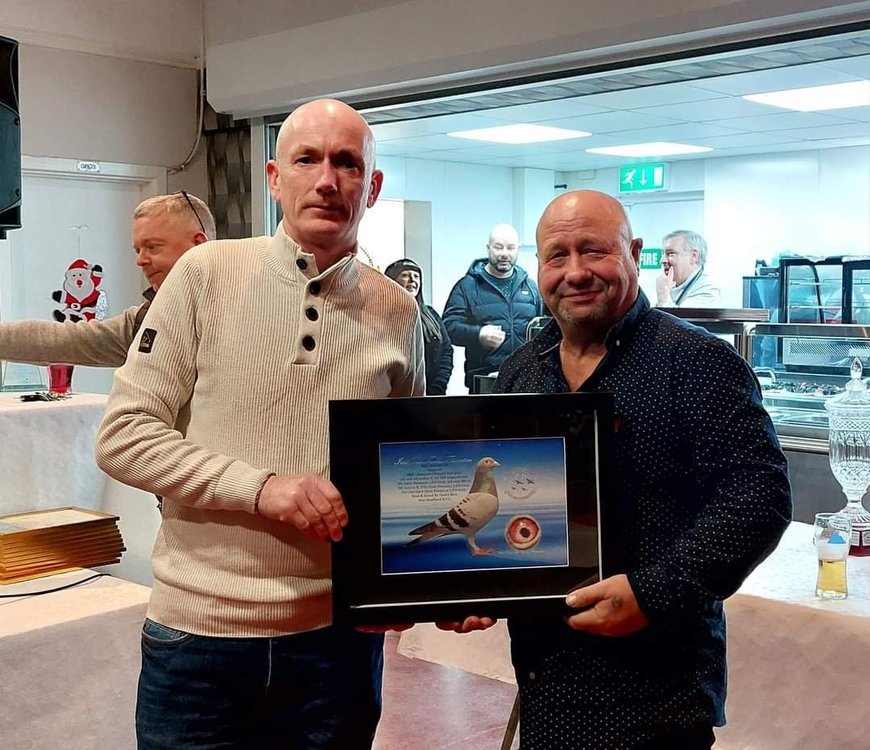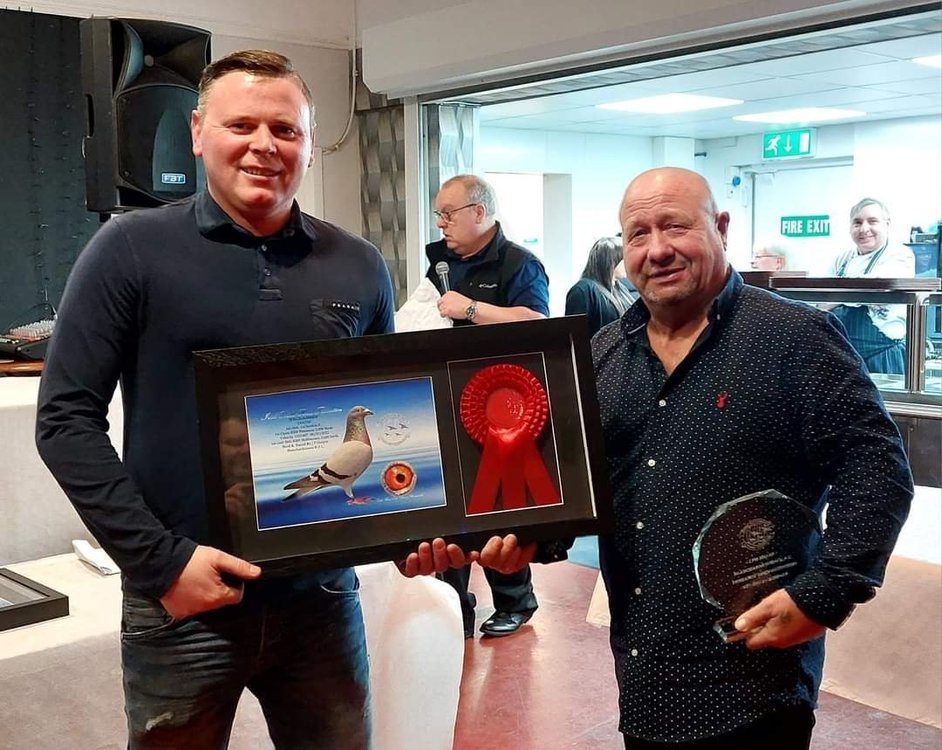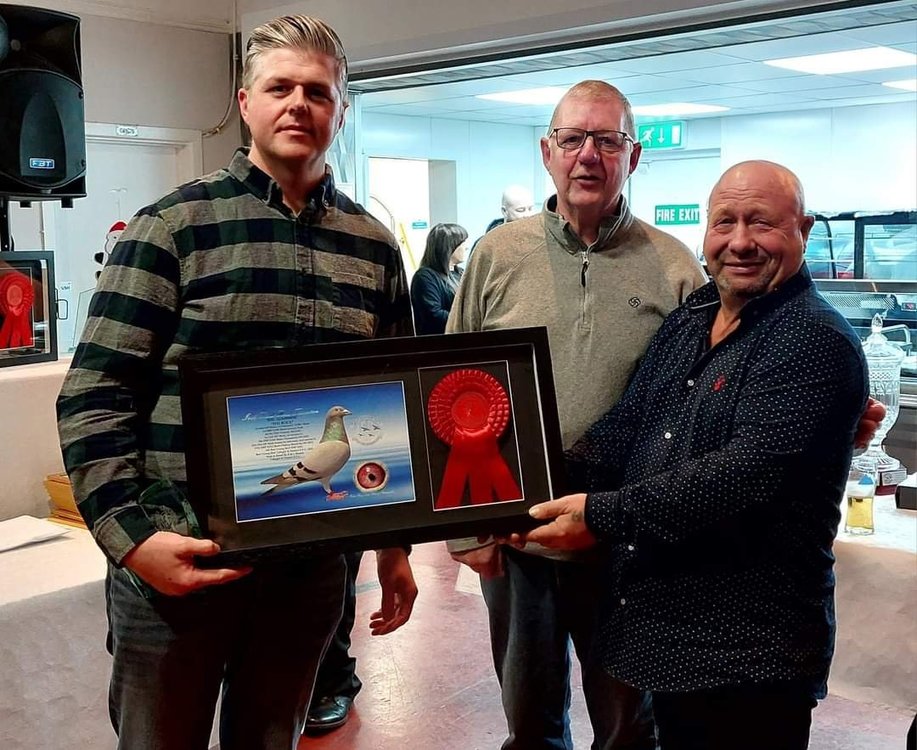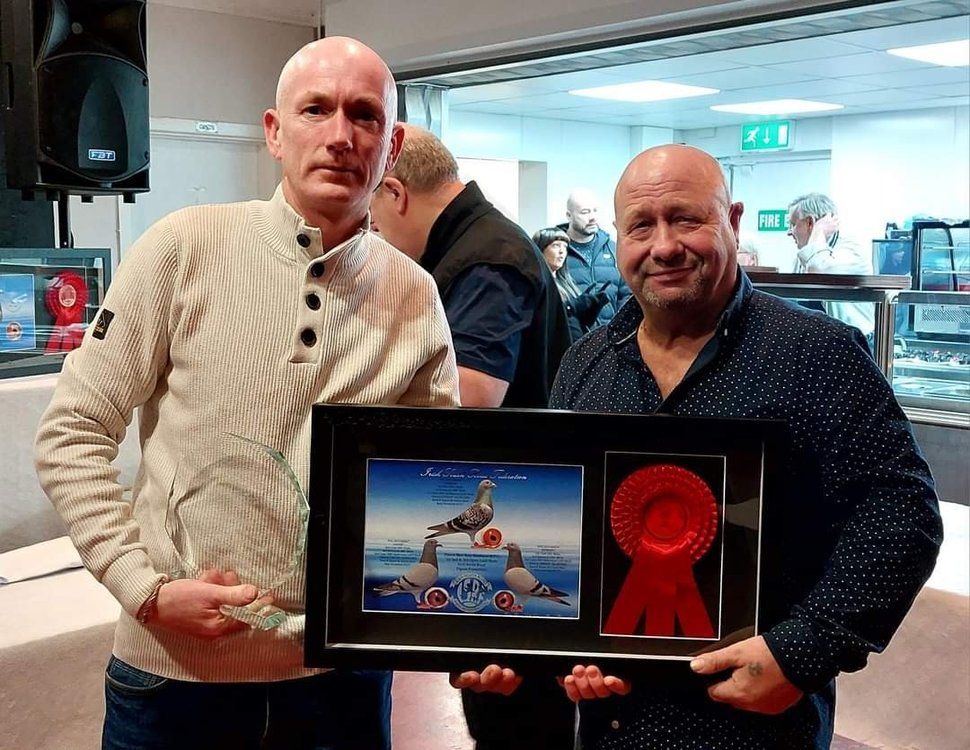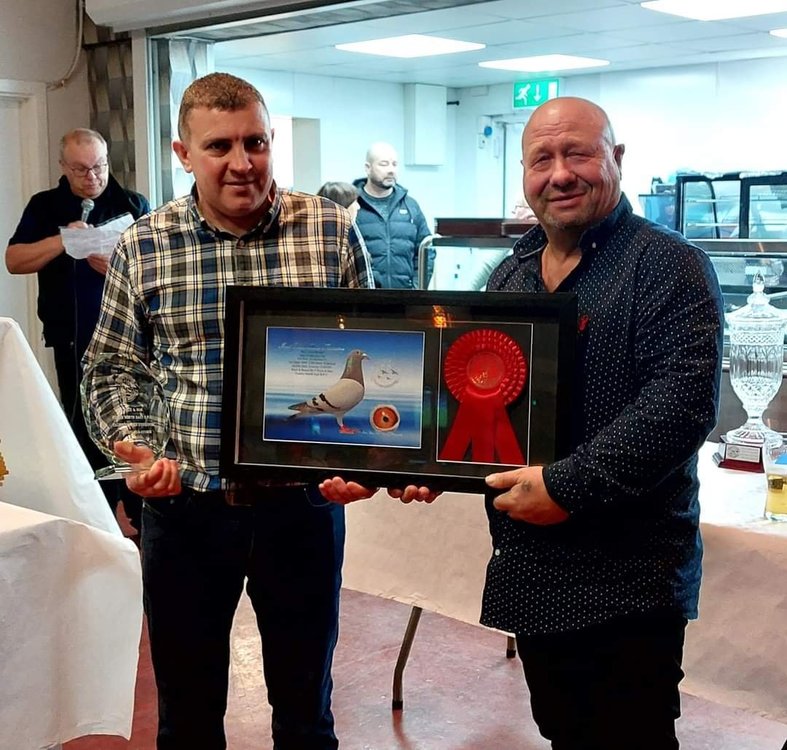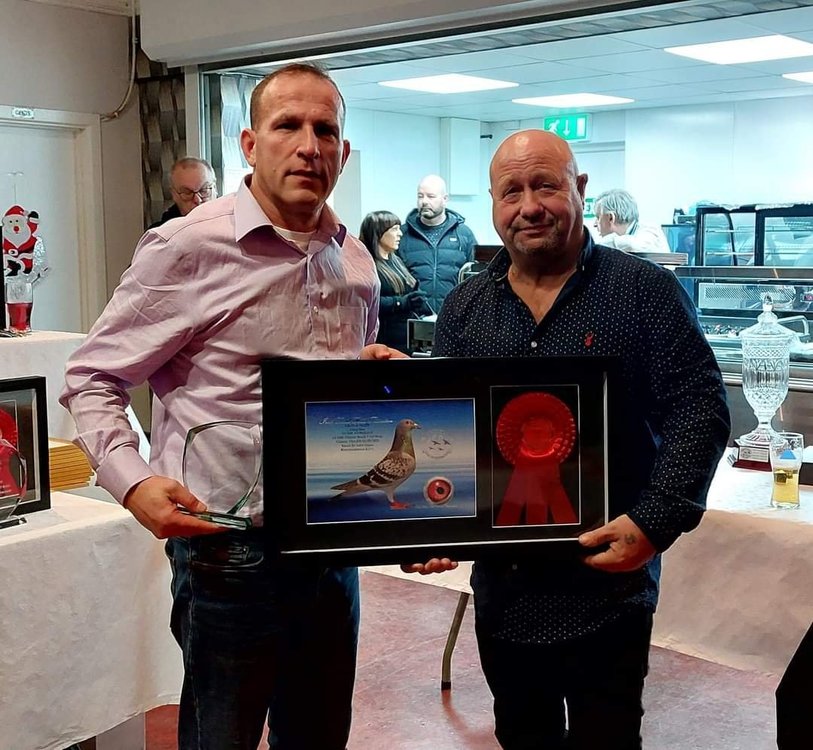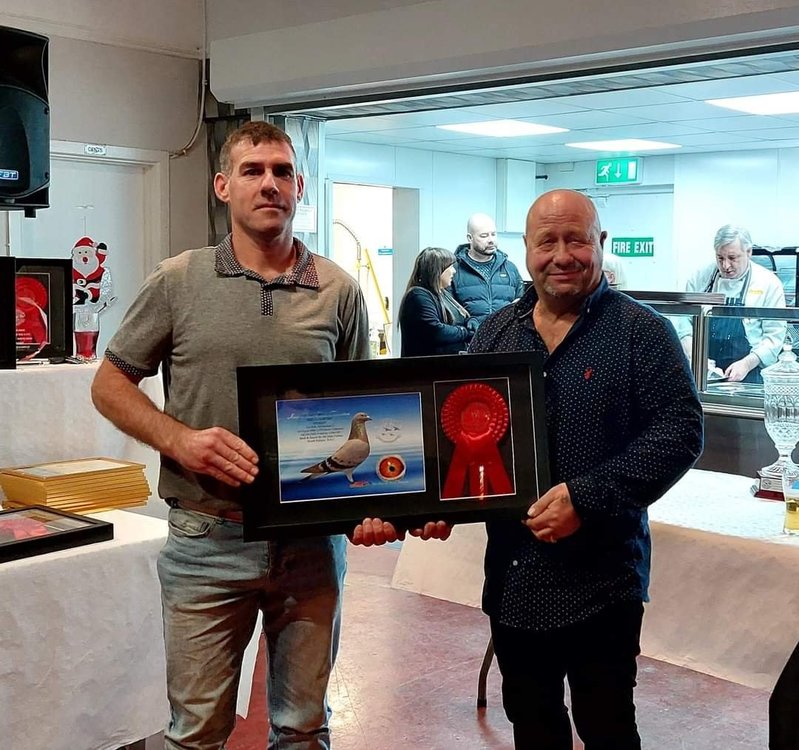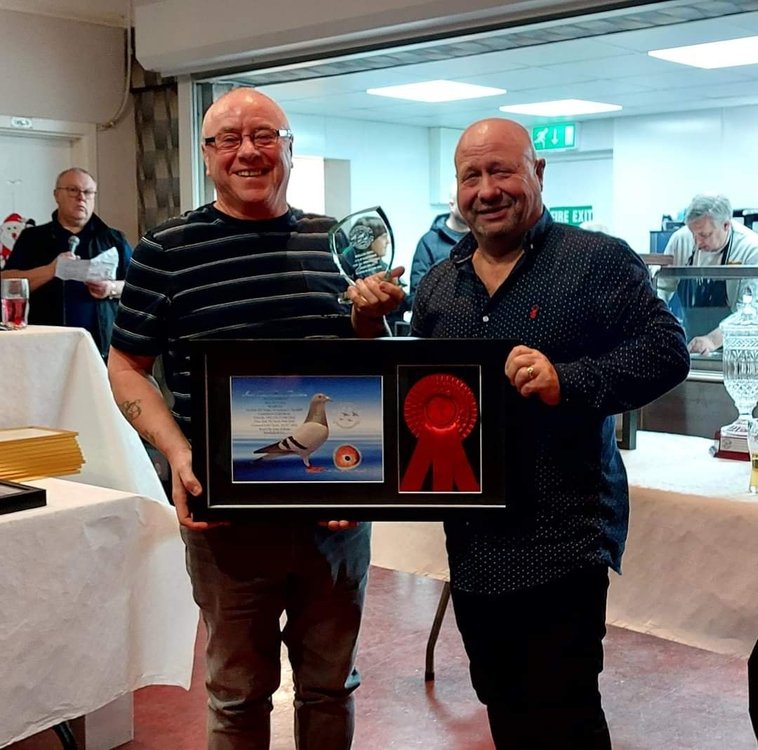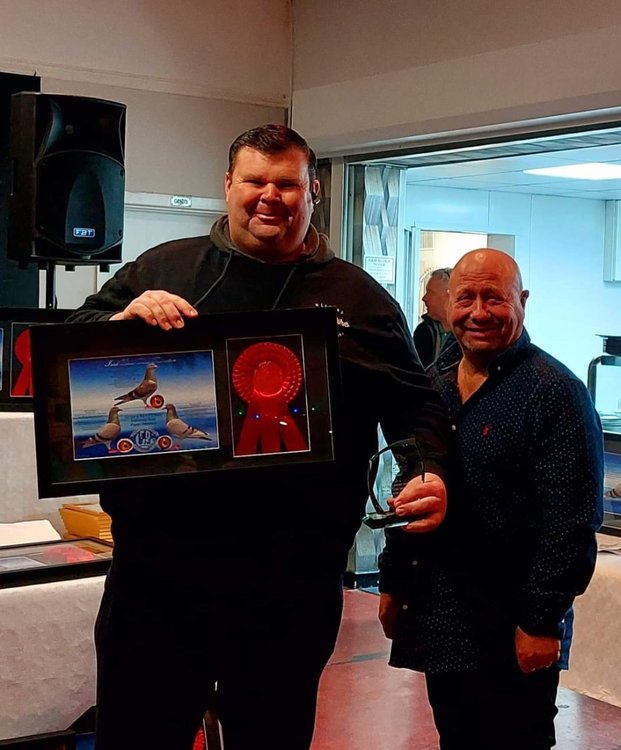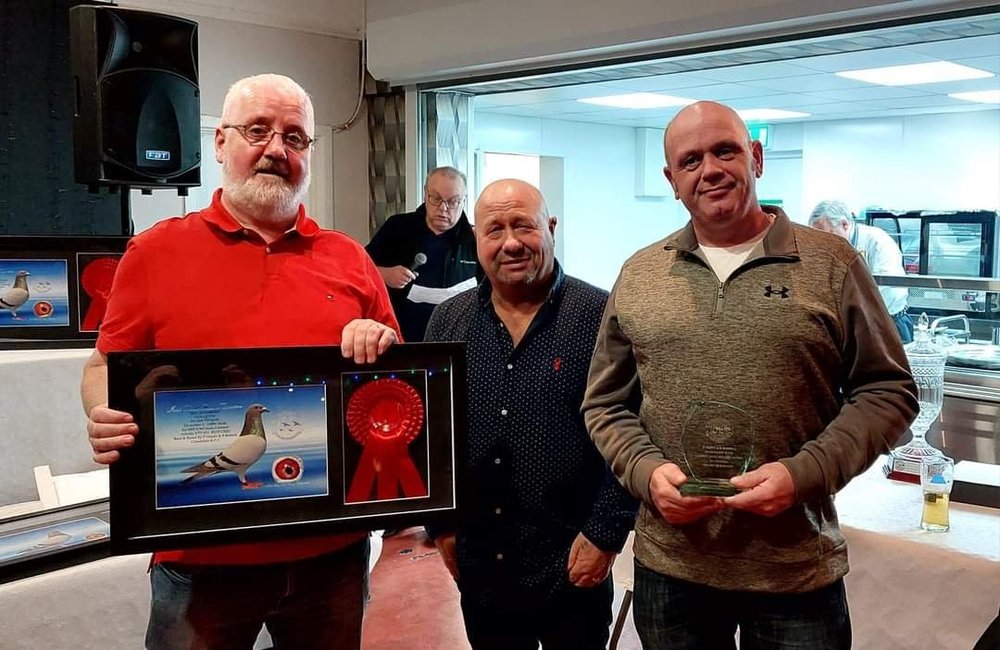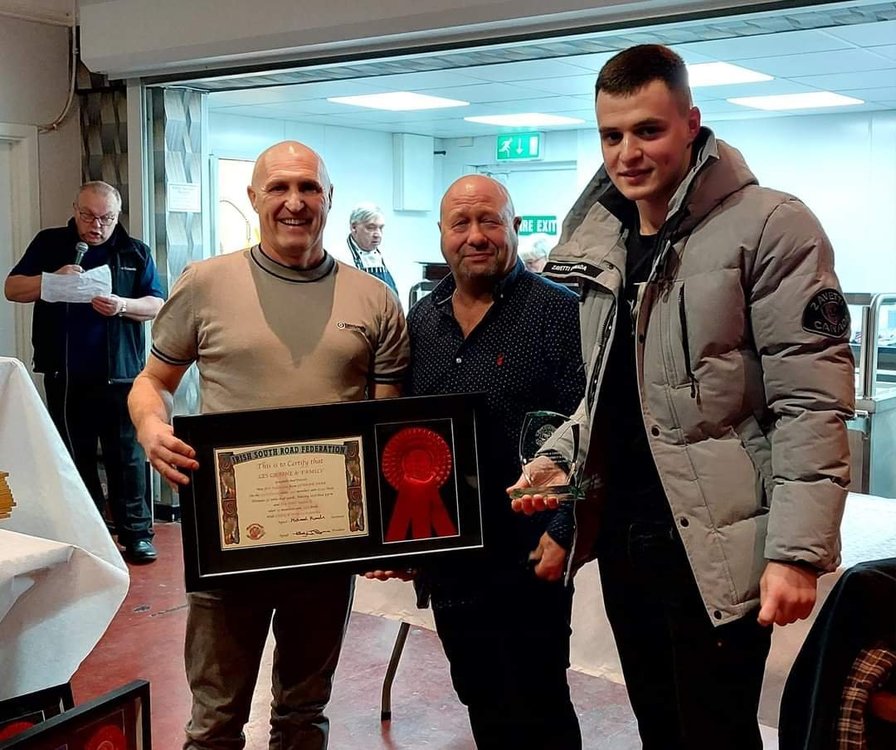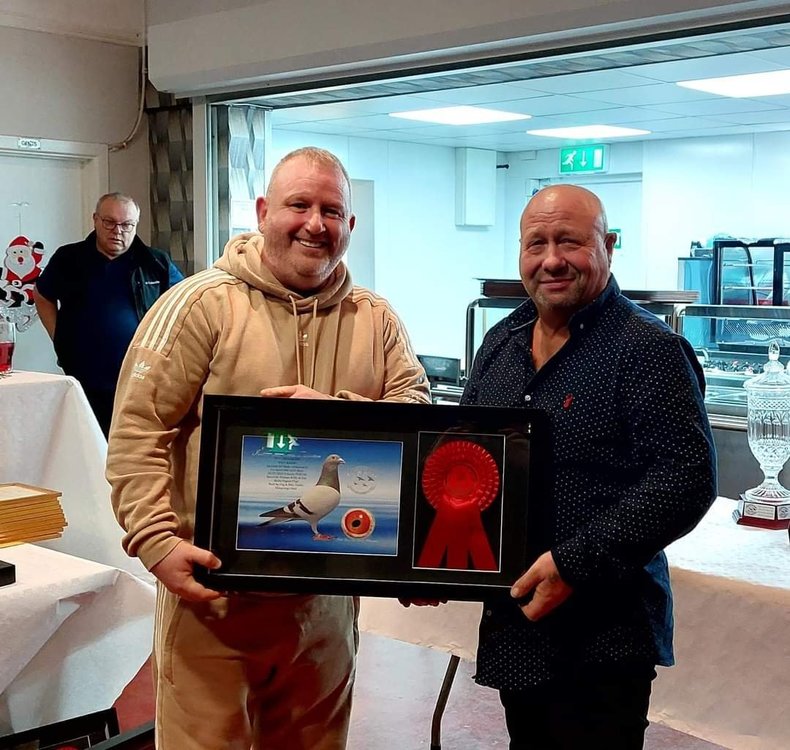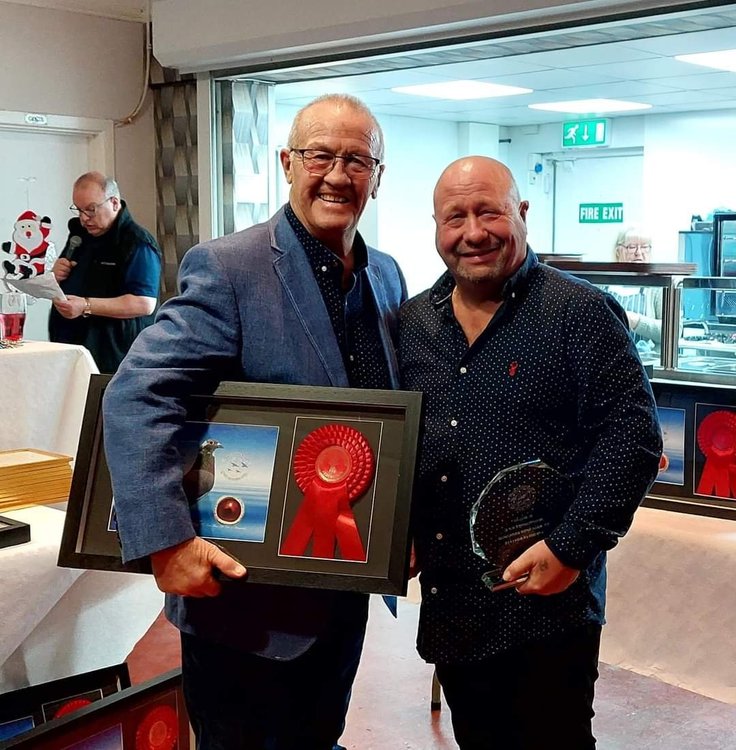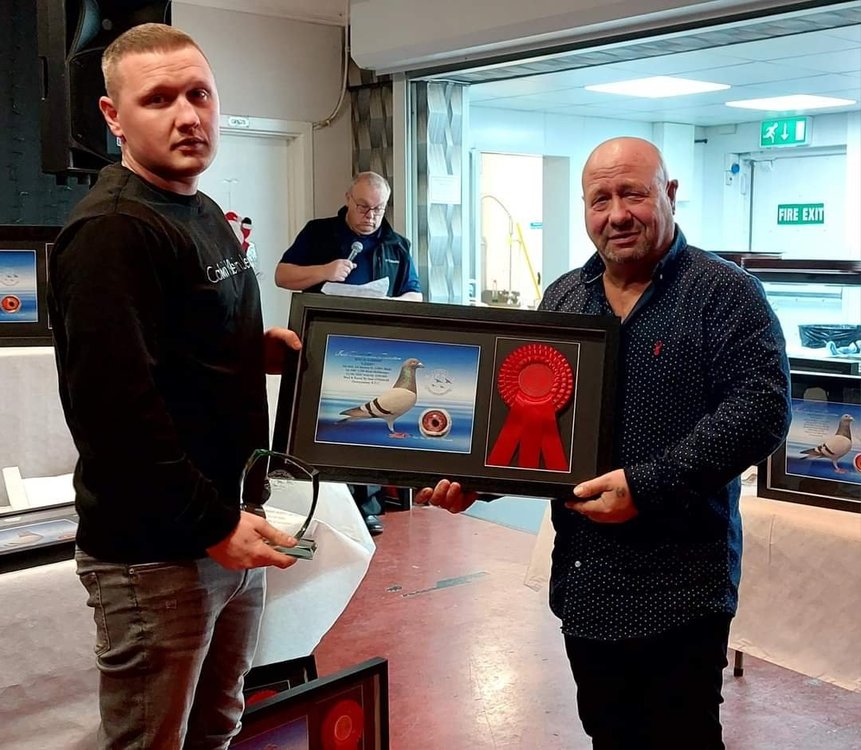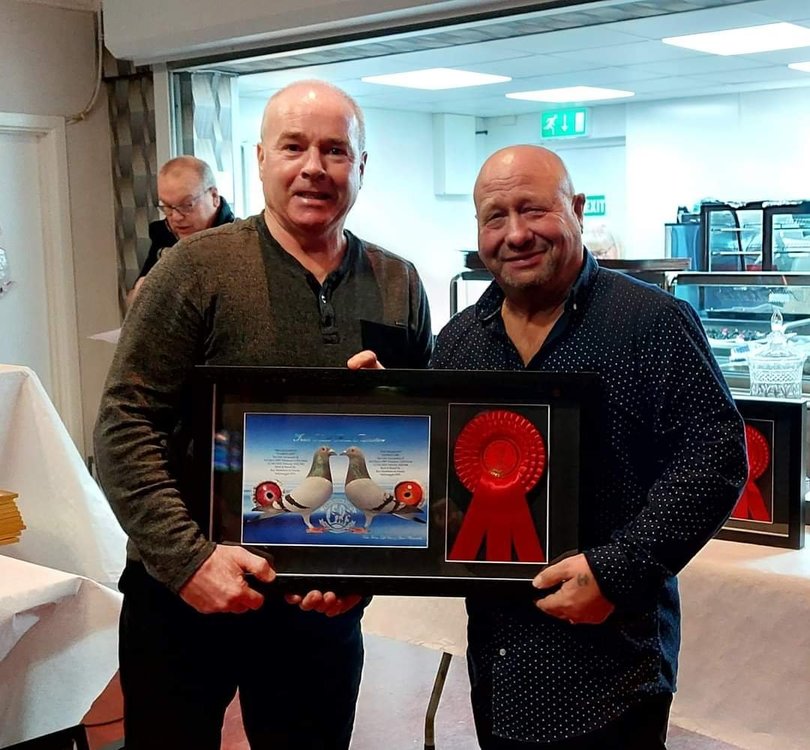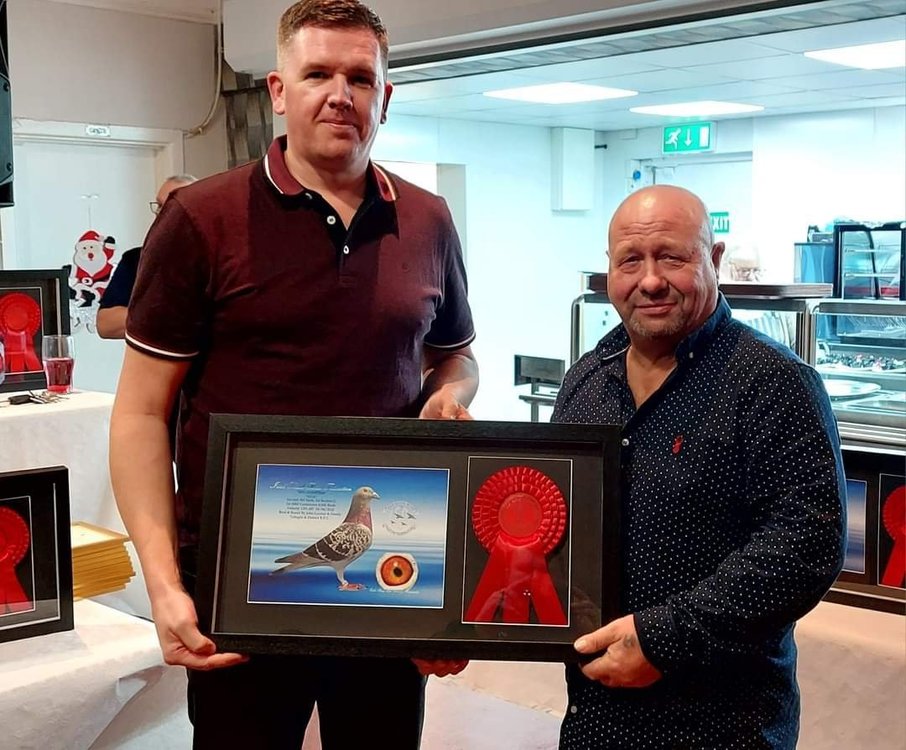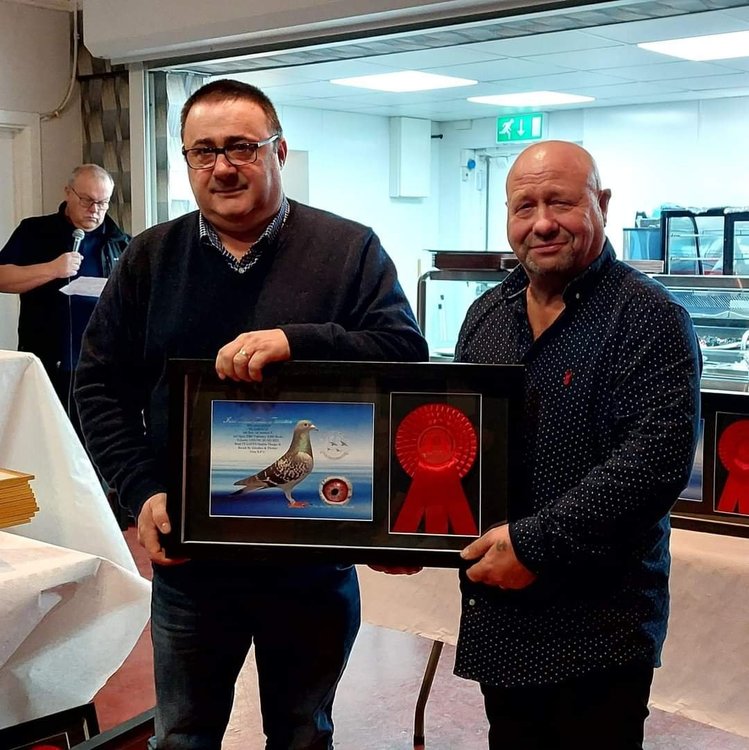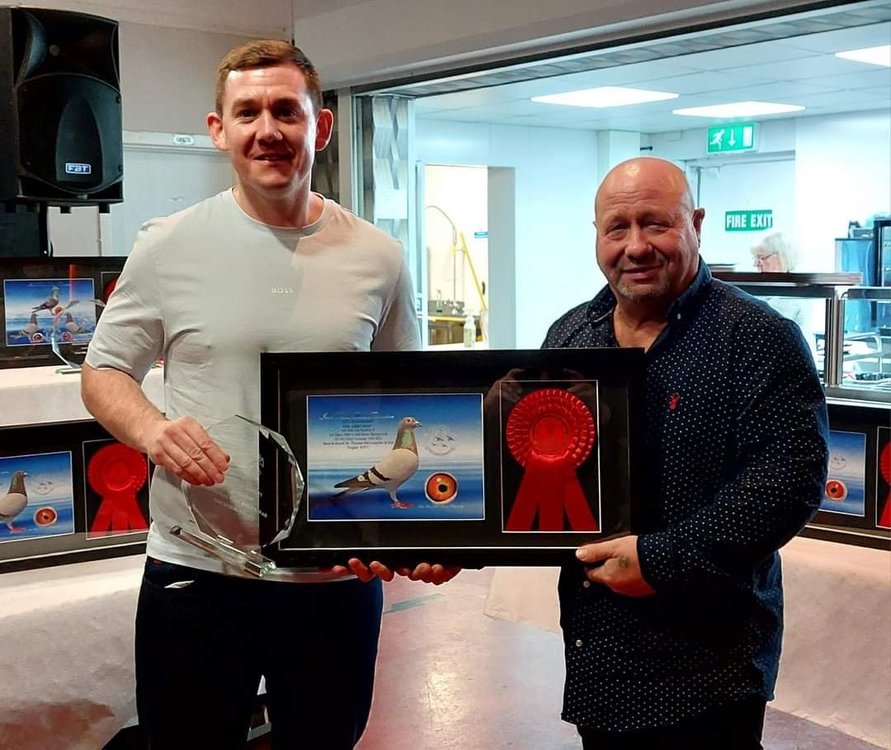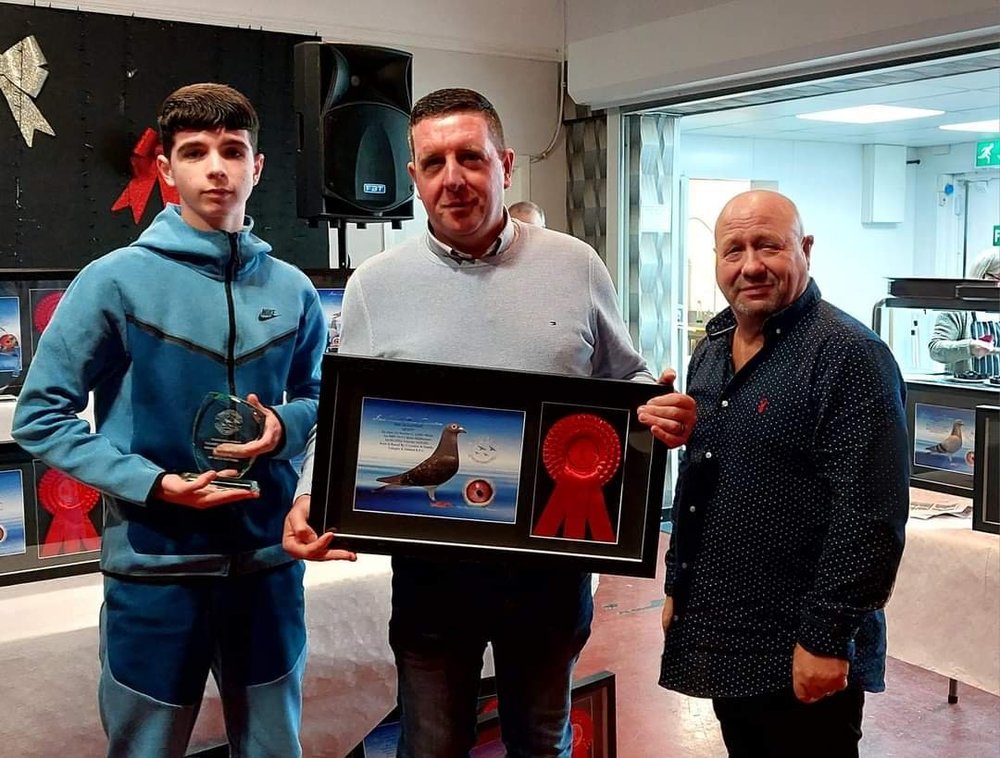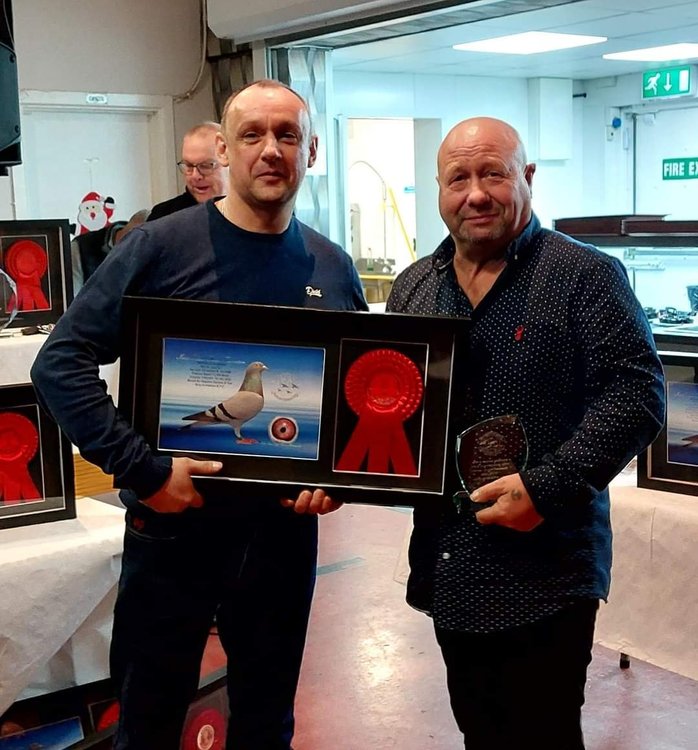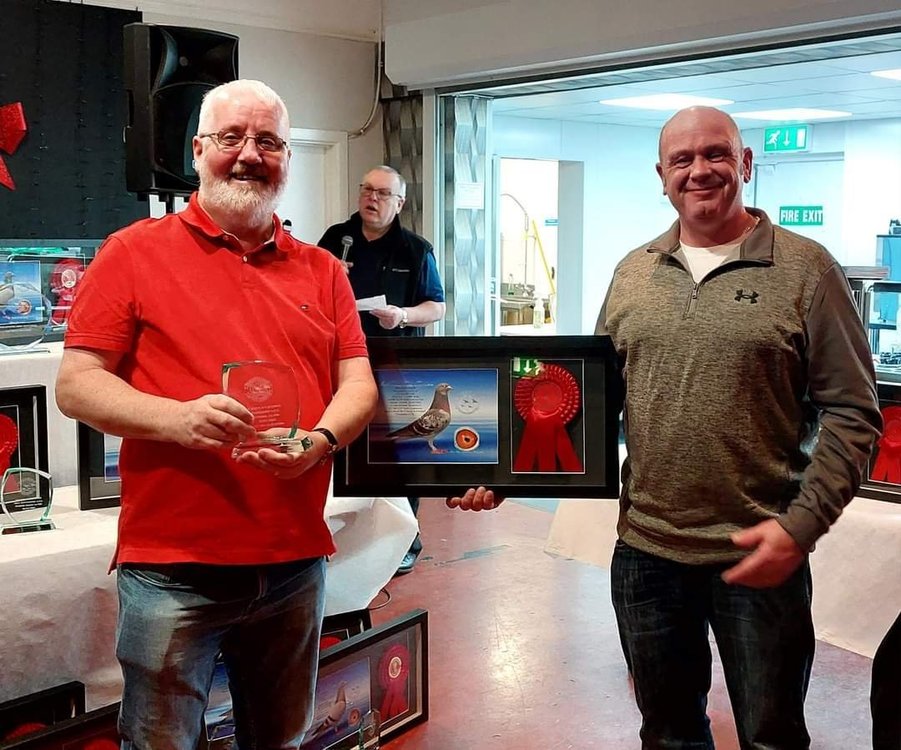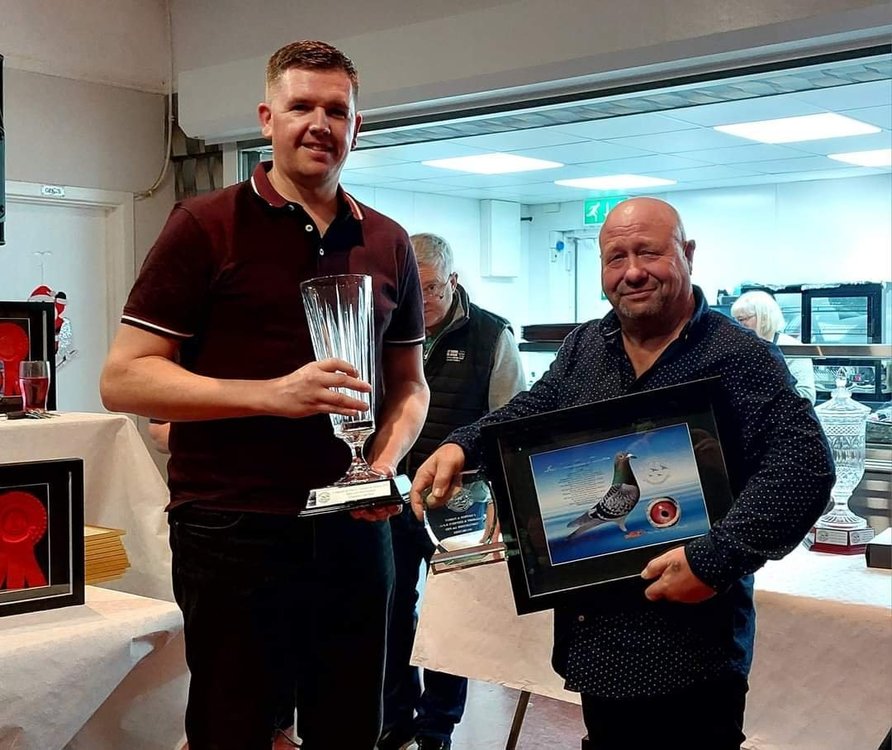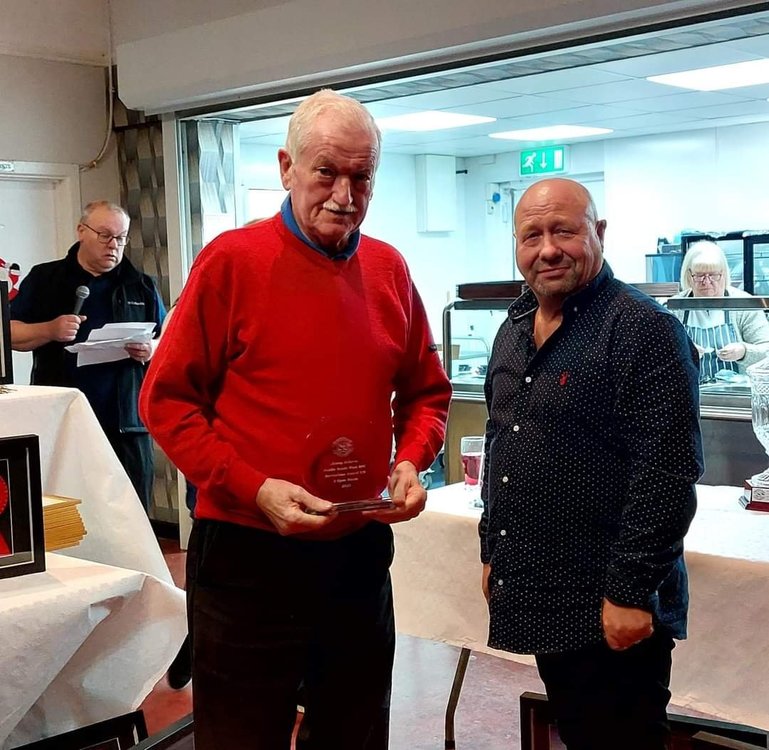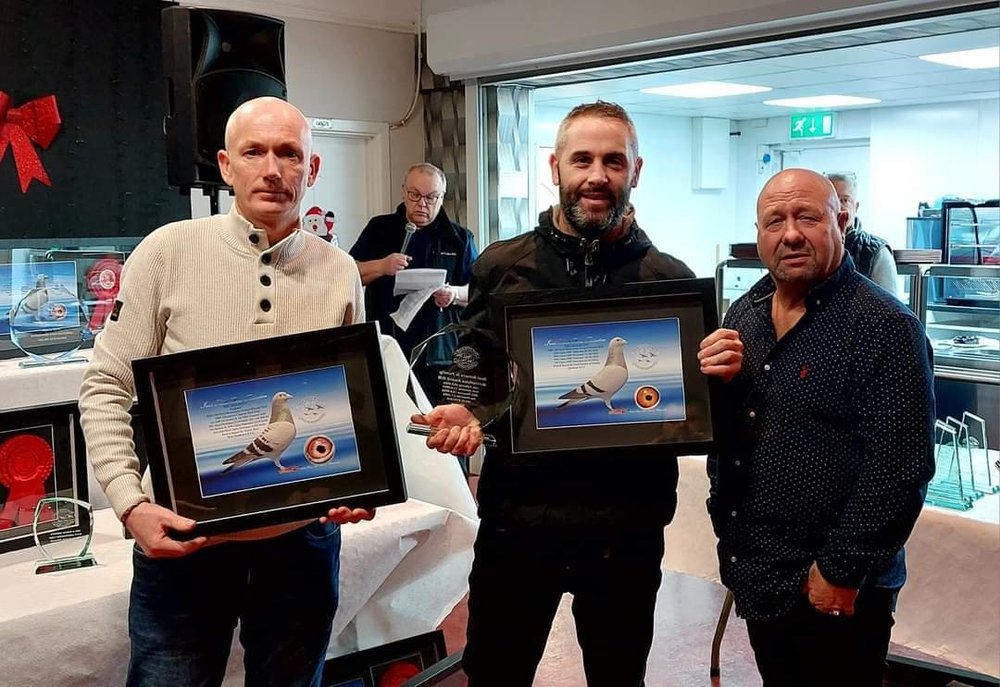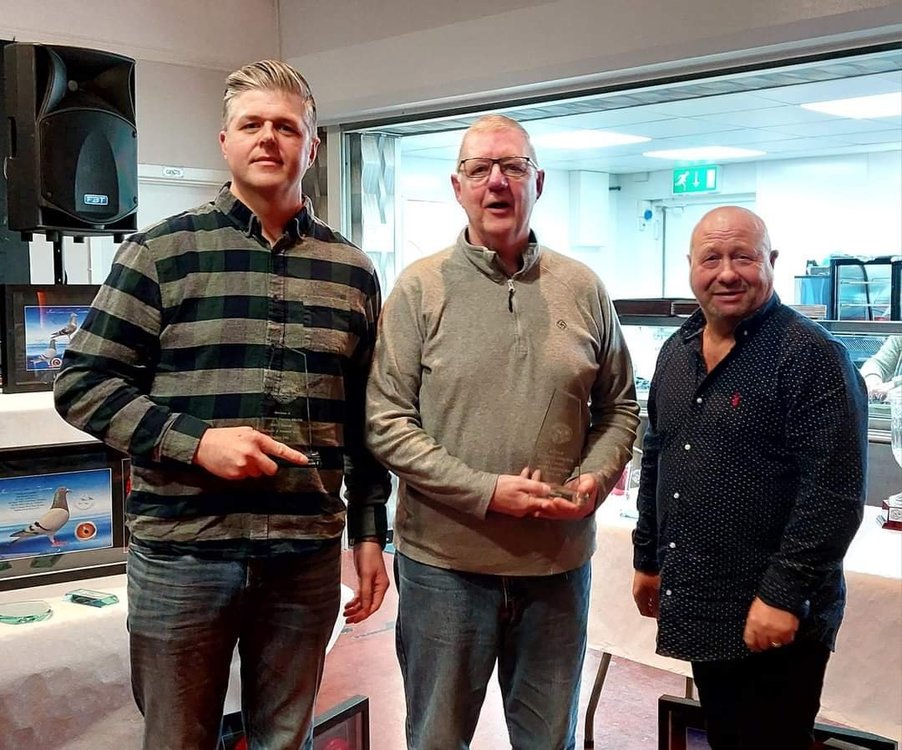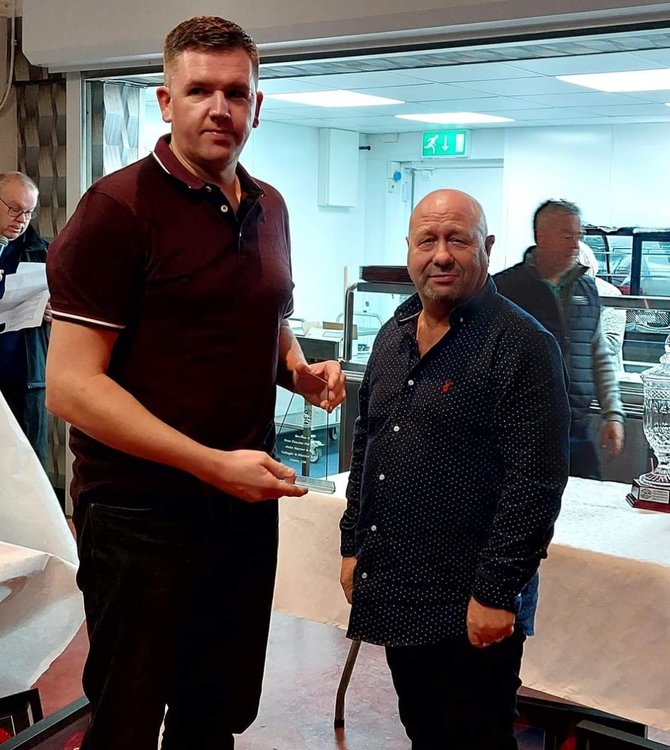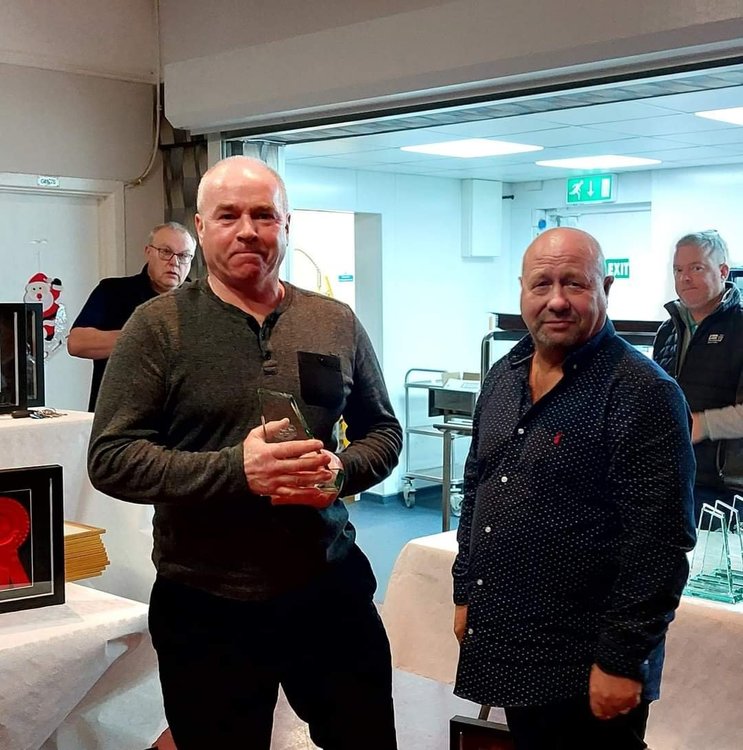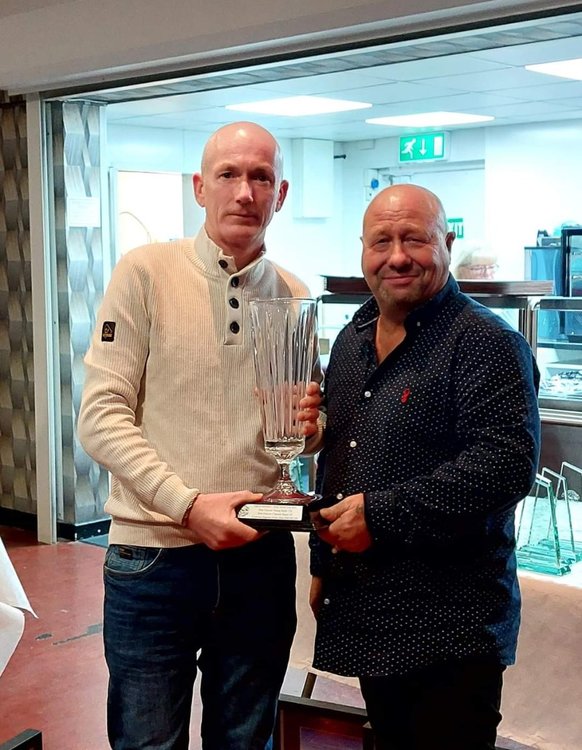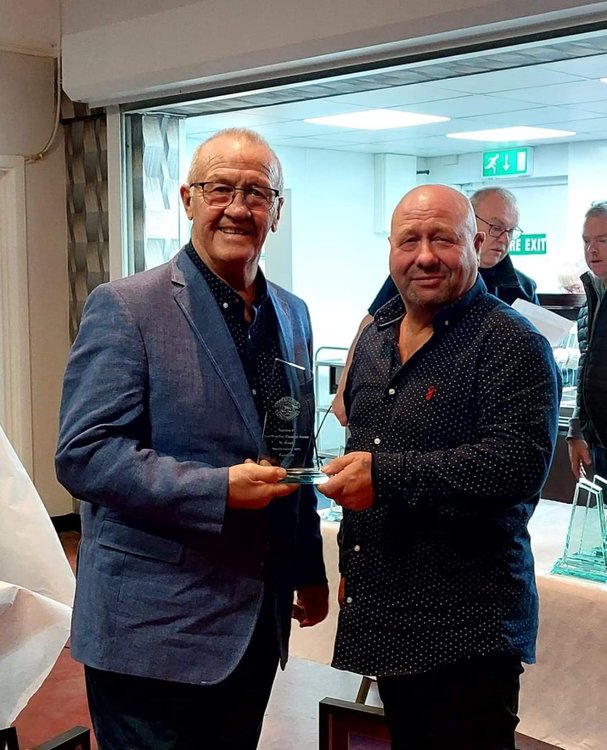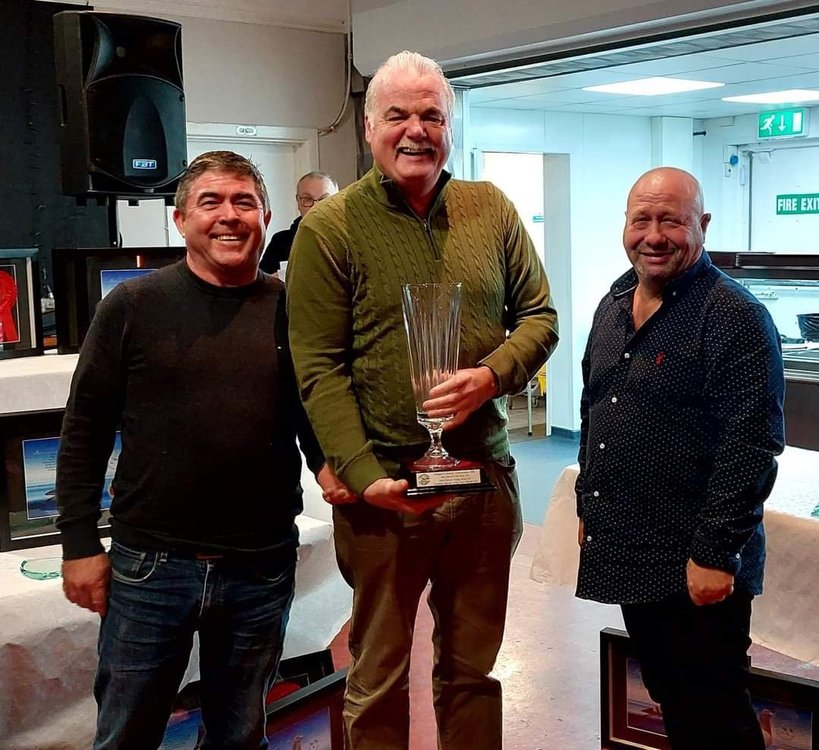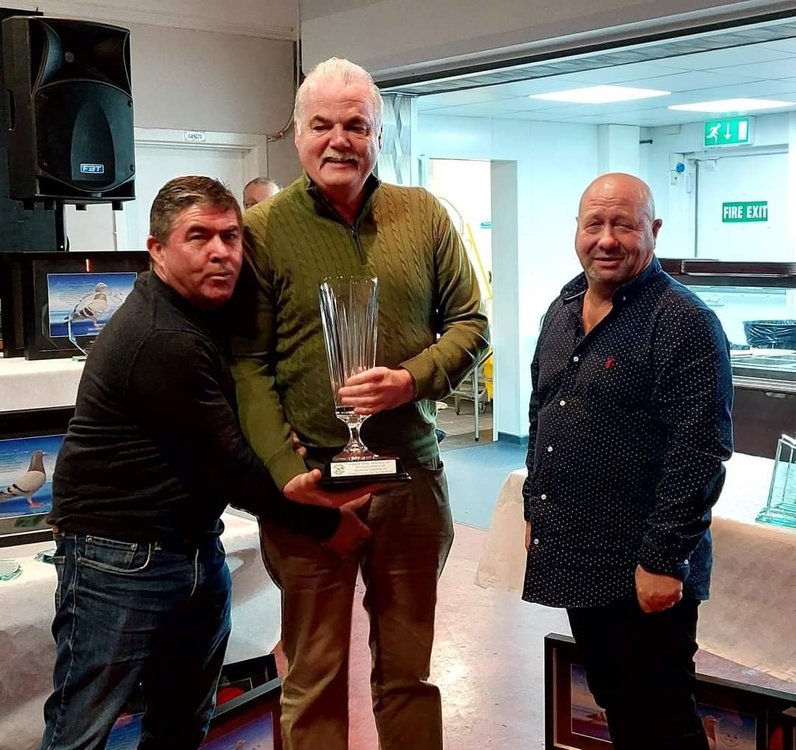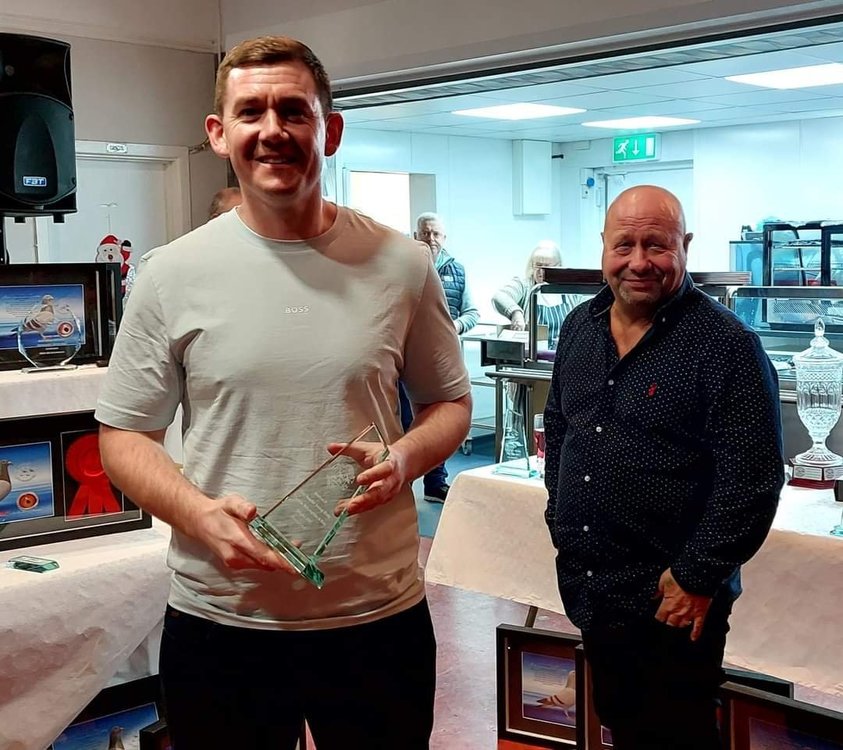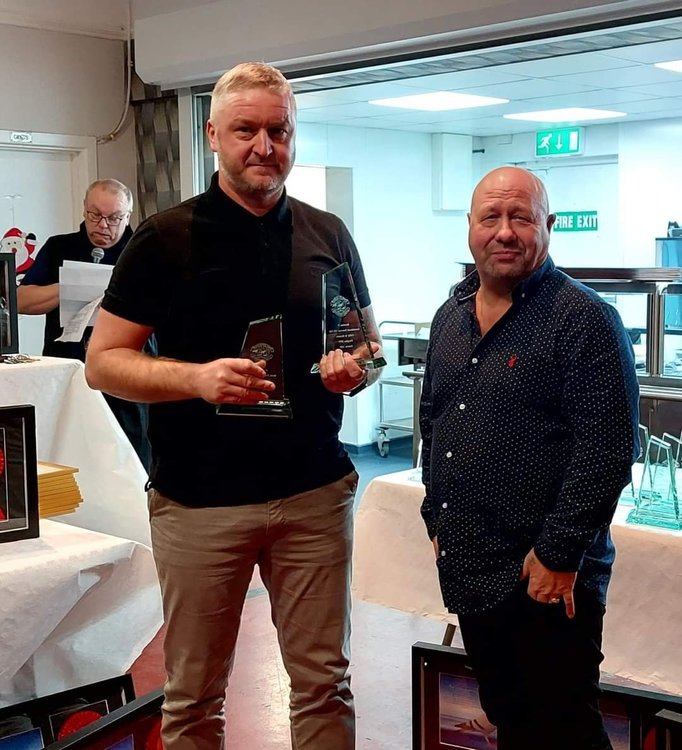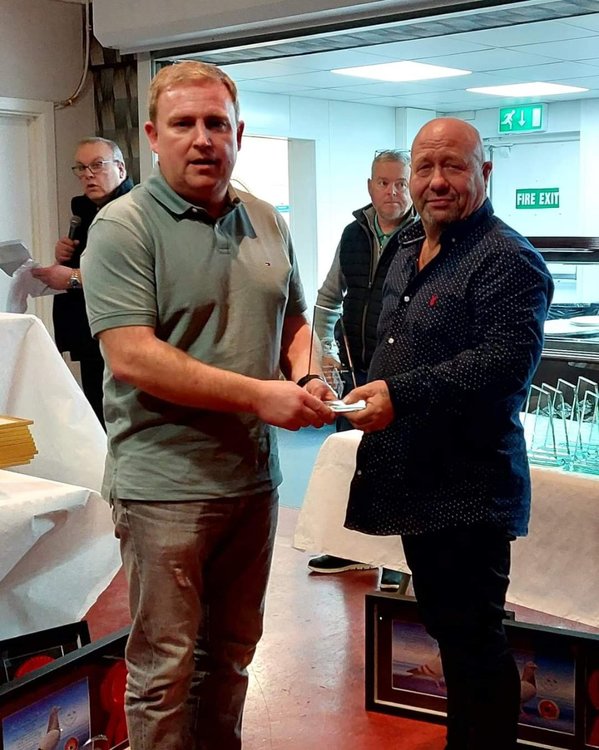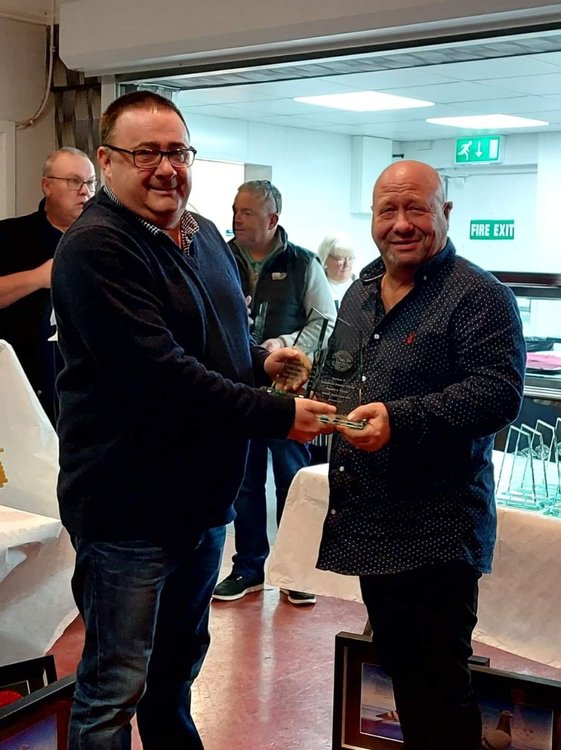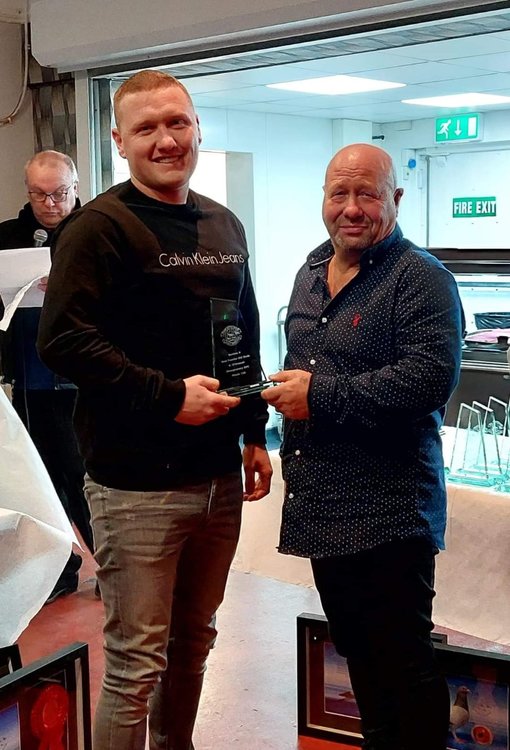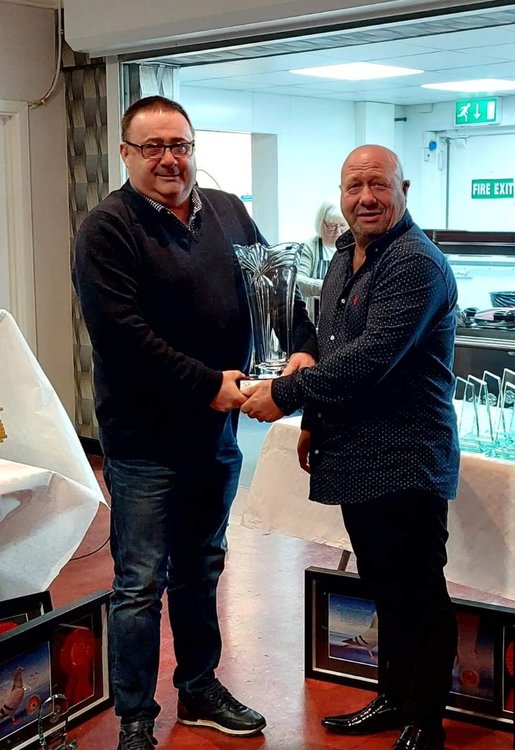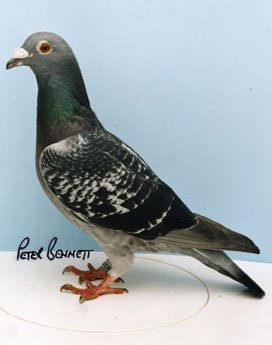-
Posts
35,922 -
Joined
-
Last visited
Content Type
Profiles
Forums
Events
Everything posted by sapper756
-

Danderhall Christmas Race Morpeth 17th December
sapper756 replied to sapper756's topic in Notice Board
Liberated from Morpeth 9.45 South West Wind -

Dumbarton Pigeon Club Show 17th December 2022
sapper756 replied to sapper756's topic in Notice Board
Good luck with your show today -
-
What colour are the SHU 2023 Rings?
-
-
Sorry to hear this Colin, hopefully you will get this sorted.
-
-
Scotland the home of the long distance champions. (Part 7). The late, Mat Jamieson of Annan. This week I have the very great pleasure of featuring one of Scotland's all time 'greats' of long distance National racing, the late, great Matt Jamieson of Annan. He started up in the sport in 1937 as a 15-year-old lad and he was brother to John Jamieson and uncle to Billy Jamieson of Annan. The name Jamieson has been at the top of long distance racing in Scotland for many years an… See more
-
Scotland the home of the long distance champions. (Part 6) Billy Jamieson of Annan. This week we are going to Scotland, the land of the long distance doos to visit the premier long distance loft of Billy Jamieson of Annan. Bill says he is only interested in SNFC Channel racing from 410 miles through to Niort 600 miles, and since starting upon his own at his present address in 1982 has been highly successful. The name Jamieson of Annan has been famous in Scottish long distance pigeon racing for many years as his father, John, and his uncle Matt were the brilliant Jamieson Brothers. Bill entered the sport in 1959 as partner to his father and flew as Jamieson & Son, with outstanding success, winning their SNFC section eight times and 1st open Nantes SNFC (543 miles). When starting on his own in 1982 six pigeons came from the old loft and of these two became significant in his present day set-up, being mealy cock '9096' and the grizzle cock. '09299'. These two cocks were sire and grand-sire to many outstanding national racers and their bloodlines were mostly Kirkpatrick/Sion and Proctor Smith. Bill introduced birds from Eric Fox of Bakewell in 1985 and these proved to be an excellent cross, in particular a bad chequer hen bred in 1985. Another important pigeon brought in when forming his present loft of long distance pigeons was a red chequer cock bred by his uncle Matt, direct from his 1986 1st section Nantes SNFC winner. A blue chequer cock that Bill purchased at a local clearance sale bred winners for him up to when he was 13 years of age. Some of the SNFC trophies won by Billy are: Cameron Trophy – 2nd open Rennes in 1971, the Tom Buck Trophy in 1991 and again in 1994 for Best Average Rennes and Sartilly Nationals, South Section Average Trophy in 1995 and was Scotland's Own Fancier of the Year in 1991. On my visit to the Annan loft Billy made us very welcome and showed us some of his best racers, including a handsome red cheq cock that had been over the English Channel four times and had scored in the SNFC four times. This game pigeon raced best to ten day old eggs and had won in 1993: 75th open Rennes SNFC; 1994: 31st open Rennes SNFC; 1995: 10th open Niort (600 miles) SNFC; 1996: 18th open Niort SNFC a brilliant racer. Bill says his good friends Ray & Marion Seaton of Annan have bred some good pigeons for him including blue chequer hen '10181', winner of 9th sect, 14th open Rennes SNFC; 2nd sect, 2nd open Rennes SNFC. Blue hen '10155' winner of 96th open Rennes, 84th open Rennes SNFC, also bred a cock to win 10th open Sartilly SNFC. Two wonderful blue pied hens bred by Tom Gilbertson of Carlisle have bred some excellent long distance racers for the Jamieson loft including: 18th open Rennes SNFC; 67th open Sartilly SNFC; 8th open SNFC and 161st open Rennes SNFC. Billy races on the natural system with Channel National racing in mind and keeps 28 pairs including stock birds. The yearlings are paired up in the middle of February and they race up to 300 miles, with the old bird racers being paired up a month later. The birds are fed on a first-class mixture of beans, peas and maize and Bill says he is very proud that he has won 47 open positions in the SNFC since starting on his own in 1983. His very smart loft is 24ft long, with clear plastic sheets inserted in the roof to let in extra light. Trapping is through drop holes off a land board which runs the full length of the loft. He keeps about 12 stock birds, but some of these are paired to the best racers, to give them a safe mate for racing. Billy keeps about 36 young birds each season and these are raced natural to the perch. They are given regular training tosses from 45 miles, but Bill maintains he is not a great lover of young bird racing. The youngsters are' never hammered as they are the future of this loft, racing depends on the weather and if racing is too hard, the young bird team will be stopped in mid-programme. Bill's father, John, knew the late great John Kirkpatrick and some excellent birds were bred down from the 'master's' bloodlines. He says when he was a kid he was raised in the pigeon loft, but this has stood him in good stead all his pigeon racing career. Bill is con-vinced that success is mainly brought about by friendship, when fanciers exchange birds. He likes his birds to be medium in size, with the breeding hens being a little bit bigger, although he has known plenty good long distance racers to be small. He maintains that feeding is an art and he is not bothered if his mixture is polished or not, as long as it is sound. He feeds the birds well and about two weeks before the first National race peanuts are added to the birds' feeding. Condition seed is not given as this is not favoured at the Jamieson loft, although a little linseed is given with the moulting mixture. The youngsters are weaned on maple peas, going over to the main mixture as they start to fly. The birds are flagged around the loft for exercise and are given a lot of training to get them fit for the National events. Most of the training is from Appleby (45 miles) and the old birds usually get three or four races from about 100 miles before the first National races. Billy only sends a small team to the SNFC races, with normally about four birds being sent to the longest race from Nantes or Niort. Although he doesn't send his yearlings past the 300 miles stage, he expects all his old bird racers to have a National position by the time they are three years old, or they are got rid of. He says his birds have a quick natural recovery rate after a hard race and are not given any special treatment to aid their recovery, just allowed to rest. He is not into the eye sign method, although he never pairs together birds with the same eyes and when looking at the wing, he likes to see a good space between the last three flights. When selecting breeders Bill looks at the bird's throat and likes to see a nice pink throat, with an open slit in the roof of the mouth. Bill doesn't favour the closed in type loft and maintains good ventilation in the loft is vital to maintain good health in the birds and' one third of the front of his garden loft is open. Bill's loft has quality in great depth, with many premier prize winning pigeons living in it. Some of the best were: grizzle hen '9214' winner of 3rd open Sartilly SNFC; 206th open Sartilly SNFC. Grizzle cock '9220' winner of 167th open Sartilly SNFC; 27th open Sartilly SNFC; 114th open Sartilly SNFC; 27th open Nantes SNFC and The Pied Hen, 168th open Sartilly SNFC; 59th open Sartilly SNFC; 9th open Solway Federation Sartilly; 10th open Rennes SNFC. Brilliant pigeons and a great fancier! Gunn & Cherrie of Roslin. Although most of the lofts that I've visited in Scotland have raced on the natural, one that wasn't was Gunn & Cherrie of Roslin, as they race the roundabout system with outstanding success. Tom & David formed their partnership 20 years ago and although they like long distance national racing, they went round about ten seasons ago. Tom has been in the sport 45 years and first became interested when he visited a local fancier's loft as a five year old. Gunn & Cherrie have won countless positions in their Federation and S.N.F.C, but said their best performance was winning 1st open Rennes (540 miles) S.N.F.C. Tom said it was a great day to win the National, it was a hard race being in a heat wave and a light head wind. The 1997 season saw them record 5th, 6th and 7th open Sartilly S.N.F.C. and this was another hard day for the 496 mile race. The 5th open Sartilly pigeon was a handsome blue cheq cock bred down from Preece Brothers’ of South Wales, ‘Iron Man’ bloodlines. This game cock had previously won as a young bird. The race team is paired up early in February and their roundabout system is very basic, racing cocks and hens in the same races. They are fed widowhood mixture, being 'broken' down in the first part of the week and are never trained after the first race. Birds rear one pair of youngsters before being split three weeks before the first race. They like to compete in all races at any distance, but maintain roundabout is an excellent system for long distance racing. The main old bird racing loft is 30ft long with three sections, one of which is a special trapping section with open doors and has grille floors for easy cleaning. The cocks stay in the nest box section and the hens live on 'V' perches. The family kept is based around the 1st. open Rennes winner and a good cross is brought in from time to time. Strains mean nothing to them, all new introductions must be from the very best winning lines. The eight pairs of stock birds are housed in a small stock loft with a wire flight, and are fed mostly on beans. They are paired up at the same time as the race team in February, so their eggs can be floated under the racers. Their 45 young birds are raced right through to 215 miles, with half the team being stopped after four races. The young hens and cocks are housed separately in the racing season, and are put together on marking day to wind them up. They are given lots of training tosses from 15 miles before the first race. On our visit to the Rosin loft we handled most of their premier racers, including the blue hen ‘Duchess’, and she had scored in several national races. She is a granddaughter of the 1st open Rennes winner and bred down from top Welsh bloodlines. Full article to appear in the BHW soon. (November 2022)
-
Scotland the home of the long distance champions. (Part 5). Whenever I sit down to write an article on Scotland, I always think of the great ‘Many Miles with Mott’ video tours that Albert Taylor and I went on, north of the border, and the brilliant times we had on them. Scotland, home of the haggis, the long distance ‘doos’ and wonderful people! Derik and Anne Nordon of Langholm. One of the premier lofts in Scotland in recent seasons must be that of Derik & Anne, with brilliant performances in the SNFC, including 1st Open twice. Derik says not much racing was undertaken in the 2001 season because of the ban on racing from France, but the 2000 season saw the loft win The News of the World Trophy and Ellsworth Trophy for the Best Average for Messac and Nantes. The Nordon loft had a wonderful season in 1999 winning 1st and 2nd Open Stafford (2,847 birds), 165 miles; 4th Open Weymouth (686 birds), 310 miles; 7th Open Worcester (2,376 birds), 203 miles; 7th Open Cheltenham, (1,409 birds), 228 miles; 4th Open Basingstoke (365 birds), 365 miles and in the mighty Scottish National Flying Club they won 6th, 7th, 34th, and 65th Open Frome (3,827 birds), 272 miles; 1st, 2nd and 44th Open Rennes (3,000 birds), 490 miles; 19th Open Nantes (2,862 birds), 550 miles; 9th, 11th, 17th, 102nd and 103rd Open Sartilly (1,973 birds), 447 miles; 11th and 26th Open Leicester Young Birds (3,381 birds), 192 miles. A fantastic loft performance! I first visited the Langholm loft in the spring of 1997, while on a “Many Miles with Mott” video tour of Cumbria and Scotland and was very impressed from the outset with Derik's pigeons and loft set-up. Derik played Accordion in a dance band for many years and during the day worked in an engineering workshop, with one of his workmates being the ace pigeon racer, Ralston Graham. After several visits to Ralston’s successful loft, Derik decided in 1972 to give up the band and have a go at racing some 'doos'. He won his first gold award in 1982 with a good red chequer cock and says his winning bloodlines still go through the loft today. The Nordon loft won the SHU Dewar Trophy for Best Dual Performance in Scotland and Scotland's Own Bird of the Year in 1996 and 1997. Derik won 2nd Section eleven times be-fore winning 1st Section and then chalked up four, one after the other. He first won the SNFC in 1996 from Sartilly with his good mealy widowhood hen, ‘Anne's Delight’, and she flew the National in 10 hours 44 minutes against a north-east wind. This game hen was a Gilbert-son / Van Bruaene and the Sartilly National was only the sixth race of her life. Her sire was a wonderful mealy cock and he flew Rennes with the SNFC six times on the day, for six years on the trot and recorded 10th, 36th, 87th, 175th and 186th Open. His brother won 1st Section, 2nd Open Rennes SNFC in 1995. A brilliant family! Derik has always raced natural with the SNFC races in mind but got fed up with hawks which attacked his racing pairs every time he let them out of the loft, so in 1996, he changed his nest boxes and decided to have a go at his own system of semi-roundabout, with outstanding success. He maintains that the type of corn has no bearing on success with racing pigeons, but it must be of the highest quality. He used to like feeding beans but now feeds an ‘Irish’ mixture, adding extra maize and peanuts for the longer races. The racers are paired up the first week in March and the birds are not treated for anything. After the season on roundabout, they are re-paired for the last Channel race. Derik has a self-built brick double-decker loft which looks like a small house at the end of his hillside garden. The racers are housed in the top and the view from their sections over the valley and Langholm is really nice. The floors have grilles to keep the birds clean and all trapping is through sputnik type bays. Premier racers at the Langholm loft today are: ‘Champion Anniversary Girl’, blue hen, 1999: 1st Open Rennes SNFC (2,862birds),490 miles. This great hen won over £1,000 and two gold awards for winning five times from the Channel. ‘Hightower Kieran’, blue cock, 2001: 43rd Open Portland, 318 miles; 2000: 92nd Open Messac, 510 miles; 55th Open Vire, 470 miles; 1999: 17th Open Sartilly SNFC (1,973 birds); 1998: 19th Open Sartilly SNFC (2,042 birds); 9th Open Rennes SNFC (3,019 birds); 1996: 34th Open Sartilly SNFC (2,047 birds). This game cock won seven times in the first 100 open prizes in the SNFC and was Scotland's Own Bird of the Year in 1998. ‘Hightower 3619’, blue chequer hen won 1999: 103rd Open Sartilly SNFC (1,973 birds); 1998: 110th Open Rennes SNFC (3,019 birds); 4th Open, 1st National Hens Frome SNFC (4,005 birds); 1996: 43rd Open Sartilly SNFC (2,047 birds). ‘Hightower 1330’, red chequer hen, winner of: 2000: 4th Open SNFC King’s Cup Messac, 1999: 11th Open Sartilly SNFC (1,973 birds); 44th Open Rennes SNFC (2,862 birds); 34th Open Frome SNFC (4,005 birds); 1998: 38th Open Frome SNFC (3,019 birds). I believe one of Derik's best racers in recent years is ‘Danny Boy’, a blue cock, a champion in the truest sense of the word, winning: 1999: 2nd Open Rennes SNFC (2,865 birds); 65th Open Frome SNFC (4,005 birds); 1998: 5th Open Rennes SNFC (3,019 birds); 1997: 9th Open Rennes SNFC (3,269 birds); 38th Open Frome SNFC (3,272 birds) and over £7,000. A brilliant loft of national racers! One of Derik’s best pigeons, of all time, is his champion Kirkpatrick mealy cock, ‘Hightower Darren’s Boy’ and he was bred down from the Tommy Gilbertson and Bobby Carruthers bloodlines. This wonderful pigeon won many positions racing, but the longest SNFC race from Rennes was his main event each season, flying Rennes (490 miles) six times on the day of liberation and winning:1989: 150th open SNFC Rennes, 1990: 10th open SNFC Rennes, 1991: 97th open SNFC Rennes, 1992: 186th open SNFC Rennes, 1993: 36th open SNFC Rennes. A fantastic racing record! He was named after Derik and Anne’s first grandson, Darren, and his brother was the mealy cock, ‘Hightower Jamie’, and he was named after their other grandson, Jamie. ‘Hightower Jamie’ was also a top racer, winning: 52nd open SNFC Rennes, 157th open SNFC Rennes and 1st section, 2nd open SNFC Rennes (490 miles), the day when Dal Newcombe won the National race. ‘Hightower Darren’s Boy’ died at 22 years of age, after many years breeding winners in the Nordon stock loft and was the sire of Champion ‘Anne’s Delight’ winner of 1st open SNFC Sartilly. ‘Hightower Darren’s Boy’ a once in a life time pigeon! Derik races cocks and hens on his own semi-roundabout system and pairs them up in March. They rear a pair of youngsters and are given six 35mile training tosses while feeding the squeakers. When the youngsters are weaned the cocks and hens are parted and they are on the roundabout. The cocks stay with the nest boxes and the birds exercise separately around the loft. Derik says that, when the hens are in form, they will fly for two hours around home. The birds are allowed to be together for a few minutes on marking night but are never allowed to tread. Their normal build up for the long-distance nationals is two inland races, the Frome SNFC (272 miles), then into the main events from Rennes and Nantes. Derik keeps 12 pairs of stock birds which are paired up in mid-February and housed on the ground floor of his smart loft in sections which have grilled floors and closed-in type nest boxes. The main families kept are Bricoux / Kirkpatricks from Tommy Gilbertson of Carlisle and the late Bobby Carruthers of Bonnyrigg, with Van Hees obtained from Bernard Miles from the south of England. He did try some Busschaerts obtained from friends and said they were good up to 200 miles, but over that could not keep up with his own birds. Derik isn't hard on his young birds and says some of his best old birds racers didn't have a race as young birds. He gives the youngsters a few training tosses and races them naturally to the perch. Most of the young bird team get only a couple of races in their first year, with a few being sent to the National Leicester race from 192 miles. Derik has won countless SNFC Averages and trophies through the years and was Scotland's Own Fancier of the Year in 1993 and 1999. Well done to Derik and Anne for their wonderful performances in the Scottish National Flying Club in recent seasons. Great Stuff! Full article to appear in the BHW soon. (October 2022)
-
Scotland the home of the long distance champions. (Part 4). The late John Traill of Thornton. When John Traill passed away in June 2001, the sport of long distance pigeon racing in Scotland lost one of it’s greatest champions. I met ‘jock’ in the mid 1990’s, when I visited his Fife loft while on a ‘Many Miles with Mott’ video tour with Albert Taylor and we found him to be a real gentleman pigeon fancier. He loved long distance pigeon racing, with the highlights of his 55 years in the sport being twice 1st open Scottish National Flying Club. John was born in Balmalcom in Fife and when he was five years old his family moved to Ladybank. As young lad he had a pair of pigeons which were housed in an orange box screwed to the wall, but became first interested in racing pigeons at the age of 19, when made regular visits to the loft of his friend, Wullie Henderson. John purchased his first birds, basket and clock from Sandy Stevenson, the local cobbler in Ladybank, who was leaving the sport and top flyers at that time were Norman Dall, Jack Andrews and his old friend Wullie Henderson. John Traill liked to play Bowls and loved to dance, taking lessons in ballroom dancing at one time. The first club he joined in 1951 was the Howe of Fife Club in Ladybank and raced to a small 10ft.x 6ft. loft built by his Uncle Sam. John raced what he called the ‘Heinz 57’ strain and won out of turn at the club races in the early days, but all the time he wanted to acquire birds that would compete and win at the long distance. John’s early mistake was trying to compete in every club race and wearing the pigeons out. He moved from Ladybank to Thornton in 1965. His old original family are J. J. Baird of Liverpool (Barker strain), obtained from Wullie Henderson of Cupar. On my visit John told me, he could trace his National winning family back to some of those original pigeons he had in 1951. He always raced on the Natural system and kept 25 pairs of racers and 8 pairs of breeders. John paired everything up at the same time, the first weekend in March, and told me he liked to wean all his young birds at the same time, so they were all the same age. When he was asked about the widowhood system, a distasteful expression came on his face and he told me, he would never entertain it for long distance racing. John’s great old 24ft. ‘L’ shaped loft was in a wire compound, with a lawn out in front of it and he said it was built with the pigeons comfort in mind. It was well ventilated, with wire bays and drop hole trapping, and he didn’t use deep litter, but had a few wood shavings scattered around the floors. John was a scrapper man and maintained you shouldn’t be able to smell pigeons in a loft, with dryness being essential to keep the birds healthy. He made up his own mixture of wheat, maize, beans and maple peas, which was fed all the year round, but a few weeks before the main 500 and 600 mile events he took out the wheat and added more maize. He didn’t like to train his birds when they were feeding youngsters, but would train cocks from 20 miles, if the weather was very good and he thought training yearlings early in the season was very important. During the season he would train twice a week and liked his long distance National candidates to have a 7 to 8 hour fly in a club race about three weeks before the main events. John raced his yearlings down to Fareham (350 miles) on the south coast, his two year olds over the channel to Sartilly and his old birds had to go all the way to Nantes (620 miles) and Niort (690 miles) with the Scottish National Flying Club. His favourite nest condition for sending birds to the long distance events was sitting 10 to 12 day old eggs on the day of basketing and never sent feeding youngsters. He didn’t like jumping pigeons long distances and started them in a 60 mile club race and built them up to 600 miles. The birds were fed in pots, in the nest boxes and he told me they always had corn in front of them at all times. He liked to see the hens sitting 10 days, low in the nest bowl with that staring look, and said that was the sign of a hen being keen and in good condition. John Traill had many premier positions in the S.N.F.C. through the years, with his best being: 1995: 20th. open S.N.F.C. Niort, 80th. open S.N.F.C. Rennes, 1996: 1st, 8th. open S.N.F.C. Niort (690 miles), 1997: 11th. open S.N.F.C. Rennes, 1st, 30th. open S.N.F.C. Nantes(620 miles) and he also won 2nd. open S.N.F.C. Nantes (620 miles) and 1st. open Fife Federation Dorchester (400 miles). He won numerous positions in the first thirty open in the Scottish National Flying Club. His National winners were: CH.’TRAILL’S SPARK’, dark chequer cock, winner of 1996: 1st. open S.N.F.C. Niort (690 miles, liberated at 06.00hrs and clocked 10.20hrs next day), 1995: 27th. open S.N.F.C. Niort, 1992: 1st. open Fife Federation Dorchester (400 miles). CH.’NANCY’, the frill blue chequer hen named after John’s wife, Nancy. She won in 1997: 1st. open S.N.F.C. Nantes (620 miles) and in 1996: 8th. open S.N.F.C. Niort (690 miles). The main stock pair was a blue chequer hen bred down from the old Traill family and before being put to stock, she was a useful racer, winning many major prizes including 2nd open Federation. John told me she was the dam of the loft! Her mate was a handsome blue chequer pied, being produced from a gift egg from Keith Cochrane, and he was bred down from the Eddie Newcombe bloodlines. This wonderful stock pair bred the Niort National winner, Ch. ’Traill’s Spark’. When John introduced new stock he preferred to bring in a good hen, bred close to good 600 mile winners and out of a consistent loft. He didn’t have many crosses over the years, but some successful ones were from Dennis Dall, Bobby Carruthers, Keith Cochrane and J. & J. Keir. The loft normally had about 50 youngsters for racing each year and these were fed on a first class young bird mixture, with no maize. They were raced natural to the perch and if the weather was good, John would started to train them three weeks before the first Federation race, which was about a 60 mile fly. He started to train them at one mile to teach them to come out of the basket and worked them up in stages to 40 miles. All the babies were raced through the Federation programme, but if he fancied one or two, he had no problem about stopping them at the 100 miles stage. He told me he had tried the nest bowl in the corner trick, but had more success racing them to the perch on the natural system. The Traill young bird team were never put on the darkness system and liked them to have as much fresh air and sunshine as possible in their early life. John liked to race his youngsters well, as he maintained it was important for good experience and would keep them in good stead in later life. John’s work was a driver on the railway and told me, he had great support from his wife, Nancy with his pigeons and his family as a whole were very interested in his hobby. He was president of the Thornton Club and Fife Federation for 23 years. A well respected fancier! John would like to see a good eye on a pigeon, but always relied on handling and feather quality, and would quickly discard any bird that didn’t come up to his requirements in the hand. When he judged handling shows, he soon turned the class over, being very quick to re-turning undesirables back into their pen. John used to advice novices to go to the premier local fancier to obtain their starting stock, have plenty of patience and establish a winning family by testing them well in racing. John Traill established a line bred family without going to close, he never paired brother x sister or father x daughter, preferring half brother x half sister or grand sire x granddaughter matings. His main aim was test any crosses to the full, before let it in to his loft. John would take the odd late bred off any special pairs for the stock section or for breeders for his friends. John always maintained the season started when the young bird races finished the season before! Nest boxes came out of one end of the loft and fitted out with perch for the hens to winter on. The cocks remained perched on the front of the closed nest boxes in the other two racing compartments and the young birds remained together for another month, and then separated for the winter. During the moult the birds were given a good quality mixture and a bit of linseed every two days. They got plenty of regular exercise and baths in the resting period. Full article to appear in the BHW soon. (Oc-tober 2022)
-
Scotland the home of the long distance champions. (Part . Billy Jamieson of Annan. This week we are going to Scotland, the land of the long distance doos to visit the premier long distance loft of Billy Jamieson of Annan. Bill says he is only interested in SNFC Channel racing from 410 miles through to Niort 600 miles, and since starting upon his own at his present address in 1982 has been highly successful. The name Jamieson of Annan has been famous in Scottish long distance pigeon racing for many years as his father, John, and his uncle Matt were the brilliant Jamieson Brothers. Bill entered the sport in 1959 as partner to his father and flew as Jamieson & Son, with outstanding success, winning their SNFC section eight times and 1st open Nantes SNFC (543 miles). When starting on his own in 1982 six pigeons came from the old loft and of these two became significant in his present day set-up, being mealy cock '9096' and the grizzle cock. '09299'. These two cocks were sire and grand-sire to many outstanding national racers and their bloodlines were mostly Kirkpatrick/Sion and Proctor Smith. Bill introduced birds from Eric Fox of Bakewell in 1985 and these proved to be an excellent cross, in particular a bad chequer hen bred in 1985. Another important pigeon brought in when forming his present loft of long distance pigeons was a red chequer cock bred by his uncle Matt, direct from his 1986 1st section Nantes SNFC winner. A blue chequer cock that Bill purchased at a local clearance sale bred winners for him up to when he was 13 years of age. Some of the SNFC trophies won by Billy are: Cameron Trophy – 2nd open Rennes in 1971, the Tom Buck Trophy in 1991 and again in 1994 for Best Average Rennes and Sartilly Nationals, South Section Average Trophy in 1995 and was Scotland's Own Fancier of the Year in 1991. On my visit to the Annan loft Billy made us very welcome and showed us some of his best racers, including a handsome red cheq cock that had been over the English Channel four times and had scored in the SNFC four times. This game pigeon raced best to ten day old eggs and had won in 1993: 75th open Rennes SNFC; 1994: 31st open Rennes SNFC; 1995: 10th open Niort (600 miles) SNFC; 1996: 18th open Niort SNFC a brilliant racer. Bill says his good friends Ray & Marion Seaton of Annan have bred some good pigeons for him including blue chequer hen '10181', winner of 9th sect, 14th open Rennes SNFC; 2nd sect, 2nd open Rennes SNFC. Blue hen '10155' winner of 96th open Rennes, 84th open Rennes SNFC, also bred a cock to win 10th open Sartilly SNFC. Two wonderful blue pied hens bred by Tom Gilbertson of Carlisle have bred some excellent long distance racers for the Jamieson loft including: 18th open Rennes SNFC; 67th open Sartilly SNFC; 8th open SNFC and 161st open Rennes SNFC. Billy races on the natural system with Channel National racing in mind and keeps 28 pairs including stock birds. The yearlings are paired up in the middle of February and they race up to 300 miles, with the old bird racers being paired up a month later. The birds are fed on a first-class mixture of beans, peas and maize and Bill says he is very proud that he has won 47 open positions in the SNFC since starting on his own in 1983. His very smart loft is 24ft long, with clear plastic sheets inserted in the roof to let in extra light. Trapping is through drop holes off a land board which runs the full length of the loft. He keeps about 12 stock birds, but some of these are paired to the best racers, to give them a safe mate for racing. Billy keeps about 36 young birds each season and these are raced natural to the perch. They are given regular training tosses from 45 miles, but Bill maintains he is not a great lover of young bird racing. The youngsters are' never hammered as they are the future of this loft, racing depends on the weather and if racing is too hard, the young bird team will be stopped in mid-programme. Bill's father, John, knew the late great John Kirkpatrick and some excellent birds were bred down from the 'master's' bloodlines. He says when he was a kid he was raised in the pigeon loft, but this has stood him in good stead all his pigeon racing career. Bill is con-vinced that success is mainly brought about by friendship, when fanciers exchange birds. He likes his birds to be medium in size, with the breeding hens being a little bit bigger, although he has known plenty good long distance racers to be small. He maintains that feeding is an art and he is not bothered if his mixture is polished or not, as long as it is sound. He feeds the birds well and about two weeks before the first National race peanuts are added to the birds' feeding. Condition seed is not given as this is not favoured at the Jamieson loft, although a little linseed is given with the moulting mixture. The youngsters are weaned on maple peas, going over to the main mixture as they start to fly. The birds are flagged around the loft for exercise and are given a lot of training to get them fit for the National events. Most of the training is from Appleby (45 miles) and the old birds usually get three or four races from about 100 miles before the first National races. Billy only sends a small team to the SNFC races, with normally about four birds being sent to the longest race from Nantes or Niort. Although he doesn't send his yearlings past the 300 miles stage, he expects all his old bird racers to have a National position by the time they are three years old, or they are got rid of. He says his birds have a quick natural recovery rate after a hard race and are not given any special treatment to aid their recovery, just allowed to rest. He is not into the eye sign method, although he never pairs together birds with the same eyes and when looking at the wing, he likes to see a good space between the last three flights. When selecting breeders Bill looks at the bird's throat and likes to see a nice pink throat, with an open slit in the roof of the mouth. Bill doesn't favour the closed in type loft and maintains good ventilation in the loft is vital to maintain good health in the birds and' one third of the front of his garden loft is open. Bill's loft has quality in great depth, with many premier prize winning pigeons living in it. Some of the best were: grizzle hen '9214' winner of 3rd open Sartilly SNFC; 206th open Sartilly SNFC. Grizzle cock '9220' winner of 167th open Sartilly SNFC; 27th open Sartilly SNFC; 114th open Sartilly SNFC; 27th open Nantes SNFC and The Pied Hen, 168th open Sartilly SNFC; 59th open Sartilly SNFC; 9th open Solway Federation Sartilly; 10th open Rennes SNFC. Brilliant pigeons and a great fancier! Gunn & Cherrie of Roslin. Although most of the lofts that I've visited in Scotland have raced on the natural, one that wasn't was Gunn & Cherrie of Roslin, as they race the roundabout system with outstanding success. Tom & David formed their partnership 20 years ago and although they like long distance national racing, they went round about ten seasons ago. Tom has been in the sport 45 years and first became interested when he visited a local fancier's loft as a five year old. Gunn & Cherrie have won countless positions in their Federation and S.N.F.C, but said their best performance was winning 1st open Rennes (540 miles) S.N.F.C. Tom said it was a great day to win the National, it was a hard race being in a heat wave and a light head wind. The 1997 season saw them record 5th, 6th and 7th open Sartilly S.N.F.C. and this was another hard day for the 496 mile race. The 5th open Sartilly pigeon was a handsome blue cheq cock bred down from Preece Brothers’ of South Wales, ‘Iron Man’ bloodlines. This game cock had previously won as a young bird. The race team is paired up early in February and their roundabout system is very basic, racing cocks and hens in the same races. They are fed widowhood mixture, being 'broken' down in the first part of the week and are never trained after the first race. Birds rear one pair of youngsters before being split three weeks before the first race. They like to compete in all races at any distance, but maintain roundabout is an excellent system for long distance racing. The main old bird racing loft is 30ft long with three sections, one of which is a special trapping section with open doors and has grille floors for easy cleaning. The cocks stay in the nest box section and the hens live on 'V' perches. The family kept is based around the 1st. open Rennes winner and a good cross is brought in from time to time. Strains mean nothing to them, all new introductions must be from the very best winning lines. The eight pairs of stock birds are housed in a small stock loft with a wire flight, and are fed mostly on beans. They are paired up at the same time as the race team in February, so their eggs can be floated under the racers. Their 45 young birds are raced right through to 215 miles, with half the team being stopped after four races. The young hens and cocks are housed separately in the racing season, and are put together on marking day to wind them up. They are given lots of training tosses from 15 miles before the first race. On our visit to the Rosin loft we handled most of their premier racers, including the blue hen ‘Duchess’, and she had scored in several national races. She is a granddaughter of the 1st open Rennes winner and bred down from top Welsh bloodlines. Full article to appear in the BHW soon. (November 2022)
-
UP NORTH COMBINE LOFT VISITS (PART 4) Soderlund & Bradley of South Shields. Two fanciers I have admired for many years are Soderlund and Bradley of South Shields, Northumberland, and a few years ago I had the chance to visit their lofts in the North East of England. The pigeon partnership of John Soderlund and Sammy Bradley was formed 40 years ago, since which time they have enjoyed success after success. Their fantastic loft arrangement is sited on some allotments at nearby Parkside, where there is a small caravan on site, for a sit-down and a cup of tea. The loft has produced countless racing champions through the years, the most noted being the famous champion 'Parkside Superman'. This great Busschaert blue pied cock was bred from stock obtained from John Palmer and Jim McKay and won countless premier positions racing, including 1st Federation twice and 2nd Federation twice. He won at six years old, after which he was retired to the stock loft and after a year at stock was purchased by Louella Pigeon World. John said he was a once-in-a-lifetime pigeon and one of the best Busschaert cocks that ever lived. He is often asked if he regrets selling champion 'Parkside Superman' and he says never, because the Massarella family made him world famous, a reputation this great pigeon himself deserves. 'Parkside Superman' has had countless Combine and National winners bred down from him. A truly wonderful pigeon! John Soderlund has been in the sport nearly 50 years and says the partners' best performance was when they won 1st and 2nd International Beauvais with two Louella Pigeon World De Baere hens flown on natural. The loft had only gone on to the widowhood system in recent years and Sammy (Bradley) says the loft's performance is not really any better than when it was all on the natural system. Their natural pigeons have put up wonderful performances for many years, but the reason for going over to widowhood is the timesaving aspect to the system. They say it is so simple, with no training, and the cocks are always in the right form for inland races up to 300 miles. The 36 cocks are fed on a standard widowhood mixture, nothing special, and are broken down on Mondays and Sundays throughout the season. The partners normally show the hen on marking night, but have won races both ways, showing or not. The returning cocks get their mates all the afternoon on the day of the race, but there is no hard and fast rule about their widowhood system. The cocks only race inland up to 300 miles, with the odd one or two being sent to the long-distance races. The partners have a fantastic racing loft and the racing cocks are housed in three sections, 12 nest boxes in each. The widowhood cocks are paired up in mid- January and allowed to sit a round of eggs after racing. All the lofts are bright and clean with sand collected from a local beach on all the floors. The partners race their 100 young birds on the darkness system. Sammy says they get daylight for eight hours a day, and this holds back the flight moult and puts the youngsters in better feather condition for their races. They are raced through to the Young Bird National (288 miles) to sort out the good cock birds, and training starts about six weeks before the first race with tosses every day. Young cocks and hens are housed separately, and are allowed to run together for a while before going to the marking station on Friday night. The 50 pairs of stock birds are kept in a fantastic loft, equipped with a massive wire flight, so they can get out in the sunshine for a bath. The stock birds are paired up in mid-December, and the partners like breeders to be from a long line of good winners. Jimmy & Keith Derbyshire of Blyth. While at a North East Two-Bird Specialist Club prize presentation, held at Peterlee Leisure Centre, I had the pleasure of meeting the father and son Northumberland partnership of Jimmy & Keith Derbyshire. That year they had won the biggest prize in Combine racing in the NEHU, the Queen's Cup from Clermont (431 miles). The Derbyshires won this premier trophy with their champion yearling blue Busschaert hen, ‘Derby's Girl’, and she was sent to Clermont on chipping eggs, with 17,114 birds competing. Both Jimmy's father and grandfather were pigeon fanciers, flying the 'milers', and as a lad he helped out in their loft. Later on he became loft manager for a local fancier and started up his own loft at the age of 17. He could not start, racing straight away, as he couldn't join a club until he was 18 years old. Jim won his first race in 1955 with a bird obtained from Billy Sharples and has been a premier flyer since the early 1960s. His first stock was Busschaerts from Tom Larkins, George Corbett and Ray Callender and they were the same pigeons he is racing today. Jim's first club was the one he still races in, Newsham HS, and his son, Keith, joined the pigeon partnership in 1995. Jim told me that he kept only a small team of pigeons in the early days and his biggest mistake was over feeding them. The partners' loft was a 30ft, ‘L’ shaped structure with a Perspex canopy and open-door trapping, and deep litter was used in the stock section. The whole team was paired up the second week in January. The partners raced 12 natural pairs on the Channel and 12 widowhood cocks for inland events. The widowhood racers reared a single youngster and were put onto the system on their second pair of eggs. The widowhood cocks had only two short training tosses prior to the first Federation race and the naturals were heavy through the season from Durham (30 miles). The widowhood racers flew out for an hour in the morning and evening and were never broken down during the racing season. They were shown their mates on marking night and the time they were given the hens on their return was governed by how hard the race was. The cocks were given garlic, hemp and peanuts and were never repaired for the longer races. Keith told me that he liked his natural racers sitting 10 day eggs for the longest race from Bourges and the Channel birds were not overworked, being picked out for certain races. ‘Derby's Girl’, the Queen's Cup winner, was only lightly raced, scoring from Lillers before winning Clermont. The widowhood cocks raced every week inland, down to the south coast. The partners kept 12 pairs of Busschaert stock birds, which were paired up at the same time as the racers, in January, and were fed on Irish mixture. When bringing in a new stock bird, Keith said, he went for good Busschaert winning lines and wasn't bothered about type. Jim maintained that when bringing in new stock you must be looking to improve your performances, as it gets harder and harder to win every season. His club, Newsham HS, won a fantastic fourteen times 1st Federation in 25 races that season. Keith said that there were four other lofts on their allotment and the racing was so 'hot' there that if you win the club, you have a very good chance of winning the Federation. One of the Derbyshires' best pigeons was a blue Busschaert hen that won 2nd open Amalgamation Beauvais (twice) and then had to go to the stock loft because she broke her wing. She was a champion racer and breeder, being the dam of many winners and grand dam of ‘Derby's Girl’, the 2002 Queen's Cup winner. Jimmy & Keith had a team of 50 young birds each year and these were raced through the programme to Ashford. They were fed on a light mixture for the first three races, then went on to Irish mixture and were trained well from Durham. The partners put half the team on the darkness system from weaning until the Beauvais weekend and they were raced to the perch, but if they want to pair up, they were allowed to. Keith maintained that if youngsters were paired up and even sitting eggs, they raced better. The Derbyshires liked racing every Saturday, but enjoyed Channel racing best and said that one of their best performances was from Bourges, when there were only six birds home on the day from the 599 mile race in the Amalgamation and they had three of them. They recorded 3rd, 4th and 5th open Amalgamation and the dam of ‘Derby's Girl’, the Queen's Cup winner, was one of those pigeons on the day. The partners had won the longest race, from Bourges, many times and finished a fantastic 2002 season by winning 1st club, 1st Federation from this race point. They told me that their biggest thrill in pigeon racing was when they won the Queen's Cup that season, because it's the best of the best! Full article to appear in the BHW soon. (November 2022)
-
-
If any club/federation or organisation has an AGM, Sale or Show in the very near future, or any other event/occasion please post date and relevant information on this topic, and I will add these details to our Calendar. Thank you in advance
-
I noticed in this last week’s BHW an advert for the position of Secretary/Treasurer for the SNFC; saying this would be a Full-Time Appointment. Surely in this present climate within our sport this has to be a PART TIME post. Back in 2006 when certain individuals including the then president of the club; did not get their own way at the SNFC A.G.M. They walked out and within a week or so formed the Scottish National Racing Pigeon Club to compete against the SNFC. During their first season they had 225 members (including members of the SNFC) sending 1531 birds to their inland race from Newbury. This year 2022 the SNRPC sent 399 birds to Eastbourne; and 390 birds to their Newark young bird race (no details of members). This shows the club are losing members nearly every year. When the SNFC present-day secretary took over the post in the year 2014; we still had the challenge of competing against the Scottish National Racing Pigeon Club; the club averaged between 431 to 645 members to the nationals. With entries from 1355 birds to the Gold Cup race sent by 431 members. With 645 members sending 4855 birds to Maidstone inland national. At the present time 2022 the most membership was from the inland race from Upper Heyford with 369 members sending (this includes fanciers who are in both Scottish Nationals) 3002 birds. From the Alencon Gold Cup race 142 members entered 713 birds and from their other channel event from Carentan; 97 members sent 396 birds. Therefore, the SNFC creates most revenue from the inland race points. However; I have it on good authority; subject to agreement; that the Central & East of Scotland Amalgamation is looking to re-start up in 2023; This consists of races from the 250 miles stage to the South coast of England; i.e.; Maidstone; Brighton; etc. They believe if the combination of the following federations; i.e., Aberdeen, Dundee, Angus, Fife, Central, North West, Midlothian, Traprain, Pentlandhills, East of Scotland, Scottish Borders ALL JOIN, they will be able to take the pigeons to the longest South Coast race for a £1-00 A BIRD. Plus, the fact again subject to agreement and some minor logistics, THEY can leave on the Friday night and be down in time to liberate the next morning if the weather is good. If this transpires; it will take all the birdage away from the SNFC inland nationals. Which would result in a massive loss of revenue to the club. Plus, the fact that if this appointment is made for a full-time secretary, then that person will be entitled to a full-time salary. Membership is dropping every year and you just have to look at the number of fanciers who are calling it a day. We have just seen our ‘Greatest Fancier’ Billy Bilsland winner of 14 nationals; give up the sport, plus there are others who are not so well known, but are members of the national, the pigeon sport is dying and we ALL KNOW THIS FACT; so, a Full- Time secretary will be a massive mistake in this present climate. Here is Another Example of this Fact I received an email with the sad news that the father and son partnership of Richard & Jamie Combe of Elphinstone are also giving up the sport. Jamie wrote ‘Hi Joe, hope you are well. You might have heard on the jungle drums but just to say that I'm intending to have an advert in the BHW on Thursday 24 th November edition, advertising all the birds for sale. My dad and his wife are looking to move house and have put their house on the market now; so, the birds need to go asap. I wondered if you could give it a wee mention in your column that week, please? I don't have time to organise an auction so I’m just going to advertise them and sell them from the paper. I have a week off work from Friday 25 th November until Monday 5 th December and would hope to have the birds away during that week. I'll be happy to show any visitors the birds that are THE JOE MURPHY COLUMN 2 available, provided they make an appointment - strictly no unannounced visitors. I will have a sale list ready that can be e-mailed out so folk will know what is available. I can be reached on 07910 514078 or by e-mail jcelphi@hotmail.com Anyone who follows the SNFC results or reads my column will have read about Richard & Jamie Combe of Elphinstone; as their name has been at or near the top of SNFC results for many years. They have also raced some wonderful pigeon over the years, including; ‘Setonpark Caelan’ winner of The Joe Murphy Sporting Challenge; she did not only win this top award; but she was the only pigeon recorded in race time. Which was something unique as this had never happened before in my Sporting Challenge. Richard and Jamie also raced their famous ‘Midnight Son’. A dark chequer cock, who was one of the best, if not the best, pigeon that Richard & Jamie had the privileged to breed and race. His sire was ‘0400’ a black-splashed red chequer Kirkpatrick stock cock. His brother was rung ‘0399’ and won 33 rd open SNFC Rennes as a yearling and his sister, ‘3220’ won 22 nd open SNFC Sartilly. The dam of ‘0400’ was 8566 a dark blue chequer hen who won 5 th open Sartilly (1) and 99 th open Sartilly (2) with the SNFC in 1995. So, as you can see, ‘Midnight Son’ was bred in the purple! ‘8566’ in turn was a ½ sister of their great hen ‘Sapphire’ a winner of 5 th open SNFC Sartilly (1) & 31 st open Sartilly (2) in 1993; & 29 th open SNFC Beauvais in 1994. Both ‘0400’ and ‘8566’ left a exceptionality amount of good channel winners for the partnership. As a young bird in 1996, ‘Midnight Son’ had 7 races out to Worcester (252 miles) and won 1 st club from Penrith. He only had 3 races as a yearling from Preston, Stafford and finally Frome with the SNFC homing early on the 2 nd day. In 1998 he was raced from Longtown, Penrith and Leyland before being sent to Frome with the SNFC. Then on the 8 th June, after a one-day holdover, he won 9 th east section, 16 th open from an entry of 4005 birds. He was then entered in the SNFC Gold Cup race from Rennes and on the 28 th of June after a 2-day holdover; he won 72 nd east section, 131 st open from an entry of 3019 birds. Finally on the 8 th of July this same year he won 3 rd east section, 7 th open SNFC Sartilly competing against 2042 birds. These results with the SNFC won him the coveted SHU Dewar Trophy for Scotland’s Bird of the Year. He also won ‘Bird of the Year’ in the Edinburgh and Lothians Social Circle. It was his performance from the Sartilly race which gave him his name. The convoy were liberated at 09-00am, and he was timed – (amid much excitement - at 00-31) by Richard; hence the ‘Midnight’ part of his name. Somehow son Jamie, arouse from his bed when it was realised the cock was on the trap. He reached the loft -dressed in pyjama top and shorts; and in his bare feet - at the same time as Richard. And so, this is the reason the ‘Son’ part came of his name. ‘Midnight Son’ went on to win 109 th east section, 241 st open Frome against an entry of (3827 birds); then won 65 th east section, 155 th open from Rennes against a convoy of (2862 birds); and he then won 4 th east section, 37 th open Sartilly from an entry of 1973 birds with the SNFC in 1999. He then met with a serious injury in 2000 which greatly curtailed racing for a while until the partnership were sure he had fully recovered but in 2002 he was sent to Reims with the SNFC and he won 45 th east section, 62 nd open from a convoy of 2650 birds; thus, securing his SNFC Gold Award for winning 5 times from France. Needless to say, he had nothing more to prove and was then retired to stock and was the sire and grandsire of many good channel winner’s; not only for Richard & Jamie but also for great fanciers like; Eddie Newcombe, Bobby Carruthers, Dale Newcombe (all sadly no longer with us) and many others. To win 3 times in the top 10 of the east section of the SNFC, was a great feat at that time and ‘Midnight Son’ and as far as I’m concerned ‘Midnight Son’ will always be a Champion in my eyes. Richard and Jamie achieved many prizes within the top 5 open positions in the SNFC results; for example; they were 2 nd open Tours, 2 nd open THE JOE MURPHY COLUMN 3 Chenoise, 3 rd open Sartilly, 4 th open Rennes, 5 th open Rennes and 3 times x 5 th open Sartilly. They also twice won ‘The Fancier of the Year’ award in 1998 with Jim Renwick and in 2004 with my Joe Murphy Sporting Challenge; and they were also runners up in 2006. They have also won the SNFC overall and section averages plus the Gold Award mentioned above; They also won SNFC Silver Awards won in 2008; 2009; 2015; 2016 & 2018. I have highlighted a good few of these achievements in previous articles. My thanks to Jamie for his email and I hope Richard |& Jamie’s sale goes well, look out for the advert in this week’s paper. SHU Trophy Winners 2022 The SHU Celtic Trophy; was presented by Taffy Bowen of Wales; for the performance(s) Old Birds up to 300 miles. The winners were G W & P McAloney with the following performances; Race Point Organisation Date of Race Position in Race Number Birds Distance Velocity Alnwick Lanarkshire 30/04/22 1 st Fed 5391 Fed 96-1091 1494 1 st Section 1509 Sect Alnwick Lanarkshire 18/06/22 1 st Fed 2462 Fed 96-1091 1270 1 st Section 747 Sect Thirsk Lanarkshire 07/05/22 24 th Fed 5072 Fed 154-627 1372 10 th Section 1408 Sect Worksop Lanarkshire 21/05/22 31 st Fed 3447 Fed 213-1717 1329 15 th Section 1005 Sect Worksop Lanarkshire 21/05/22 15 th Fed 3447 Fed 213-1717 1329 Yearling 7 th Section 1005 Sect 213-1717 1329 Budworth Lanarkshire 14/05/22 32 nd Fed 4250 Fed 189-1036 1246 Yearling 18 th Section 1160 Sect 189-1036 1246 Alnwick Lanarkshire 3/07/22 34 th Fed 1193 Fed 96-1091 1270 9 th Section 643 Sect Wooler Lanarkshire 16/04/22 77 st Fed 3484 Fed 77-1057 1362 32 nd Section 973 Sect The SHU Yearling Trophy Friendship Cup; for Outstanding Performance was won by S & S Tierney of Edinburgh. From the SNFC Alencon race point flown on the 1 st July 2022, flying a distance of 534 miles 449 yards recording a velocity of 1087.64 winning 21 st open competing against 713 birds. This pigeon has already won 7 th section B 47 th open Yeovil, from an entry of 1631 birds, and also won 36 th open Carentan from an entry of 396 birds. We move on now to the Annie Ross Bowes Memorial Trophy; which is awarded to the fancier who has donated their free time in promoting the pigeon sport in Scotland. The winner of this award is Joe Allan of Midlothian, nominated by Jimmy Simpson of the same federation. His letter is as follows; Dear Andrew, I would like to nominated Joe Allan of Easthouses for the ARB Trophy. Joe is in his 83 rd year and has been an inspiration all over the Lothians for helping pigeon men; i.e., moving their lofts also house moving; anything you ask Joe he would always help. He has been Midlothian federation clock ‘convenor’ also convenor for the SNFC for more years than I can remember. I am 70 years old and could not have done ½ of what Joe has done, he also ferries race birds on Friday night from 12 clubs and brings the baskets back on a Saturday. As I have THE JOE MURPHY COLUMN 4 said before he is in his 83 rd year, suffers from C.O.P.D and has vowed to die ‘A DOO MAN’. He lost his wife Violet 3 years ago and ‘Doo’s’ is all he has left. Hoping that you can give my nomination consideration yours in sport Jimmy Simpson’. I would like to congratulate Joe on winning this award, and I can also reiterate to Jimmy’s letter. Many years ago, I was asked to help out a widow whose husband had passed; she was wanting all the pigeons and loft removed. Our son Kevin was interested in her small stock loft and he purchased it. However; how was he going to get it over to Thornton in Fife, where he would collect it. Joe Allan come to the rescue and brought the loft over in his van. I have known Joe Allan for many many years, as we were both friends of the late Chris and Roy Anderson of Ayton; who were great fliers in their day. On many occasions when we visited the Anderson’s Joe would often be there as he had trained his federation members birds from down in this area at least twice a week. Then he would drop in and see the Anderson’s. Great memories and Chris and Roy had a fantastic team of birds, and the pigeon club room was in the bottom half of their property; opposite the Black Bull Pub in the main street of Ayton. Billy Bilsland lives in the top part of the village now, and we all know how successful Billy has been. Joe’s Joke A Cup of Tea One day a mother was out, and dad was in charge of his daughter. She was only maybe 2 ½ years old. Someone had given her a little 'tea set' as a gift, and it was one of her favourite toys. Her Daddy was in the living room engrossed in the evening news; when she brought him a little cup of 'tea', which was just water. After several cups of tea and lots of praise for such ‘yummy tea’, her mum came home. Dad made mum wait in the living room to watch their daughter bring him a cup of tea, because it was 'just the cutest thing!' Mum waited, and sure enough, here she came down the hall with a cup of tea for Daddy; and Mum watched him drink it up. Then she said, (as only a mother would know), "'Did it ever occur to you that the only place she can reach to get water is the toilet?" Please continue to keep the news flowing; to Joe Murphy Mystical Rose Cottage 2 Flutorum Avenue Thornton by Kirkcaldy KY1 4BD or phone 01592 770331 or Email to joejmurphy1@gmail.com REMEMBER THE J IN THE MIDDLE or you can also view online editions on: www.elimarpigeons.com www.fancierchat.co.uk www.pigeon-chat.co.uk - www.Pigeonbasics.com - Pigeon Racing the Basics! - thecanadianpigeoninternational.com www.internationalracingpigeon.com or https://sites.google.com/site/internationalracingpigeon/ Who wish my weekly contribution portfolio on pigeon topics from Scotland? © COMPILED BY JOE MURPHY




